Did you know that the centipede, a creature often feared in the West, was historically revered by the most disciplined warriors, like the Japanese samurai? The centipede tattoo is a potent, non-retreating symbol of fierce survival, concentrated power, and unstoppable progress in life. This complex body art, often rendered in intricate fine line tattoo style, speaks directly to resilience and the ability to master danger.
We will explore its powerful cross-cultural symbolism, analyze the technical challenges of drawing its numerous legs, look at ideal placements, and provide critical aftercare tips for longevity. This guide gives you the expert knowledge you need to choose the perfect small tattoo design and ensure this unique emblem of relentless strength endures for a lifetime.
Symbolism and Meaning:
The meaning of the centipede tattoo changes in different parts of the world. But it always means protection and concentrated power.
A. The Samurai’s Standard: Japanese Symbolism
In Japan, the centipede (Mukade) was respected, not hated. Samurai warriors and warlords loved this symbol.
- Absolute Victory: People believed centipedes could never move backward. This means they stand for absolute victory in a fight. It is a sign of an unstoppable spirit.
- Army Unity: A famous warlord, Takeda Shingen, used it as a sign of unity. He saw the many legs as one strong army moving forward together. The centipede was also seen as a messenger of the god of good fortune.
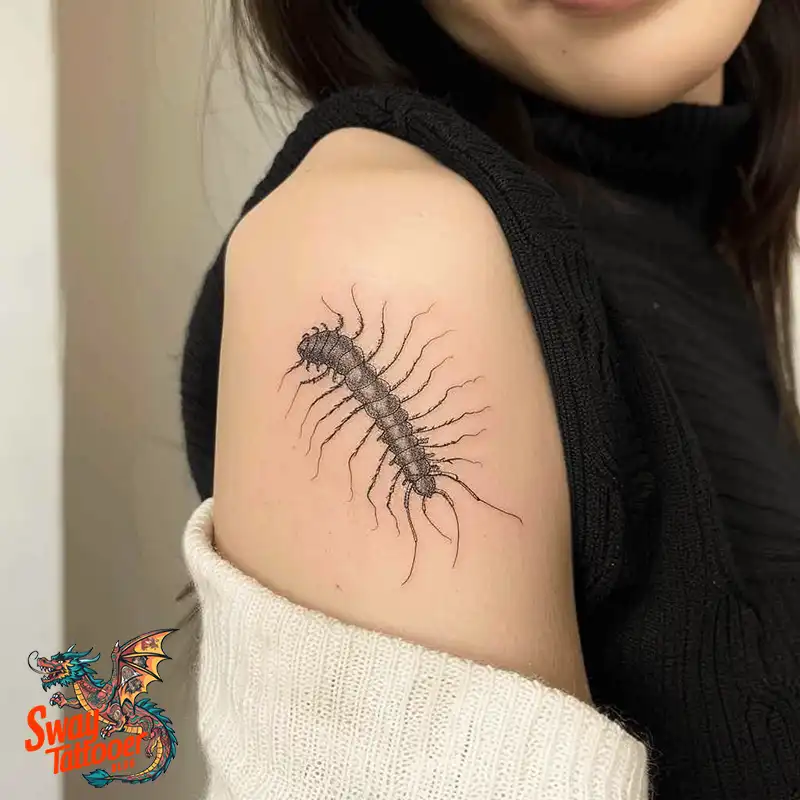
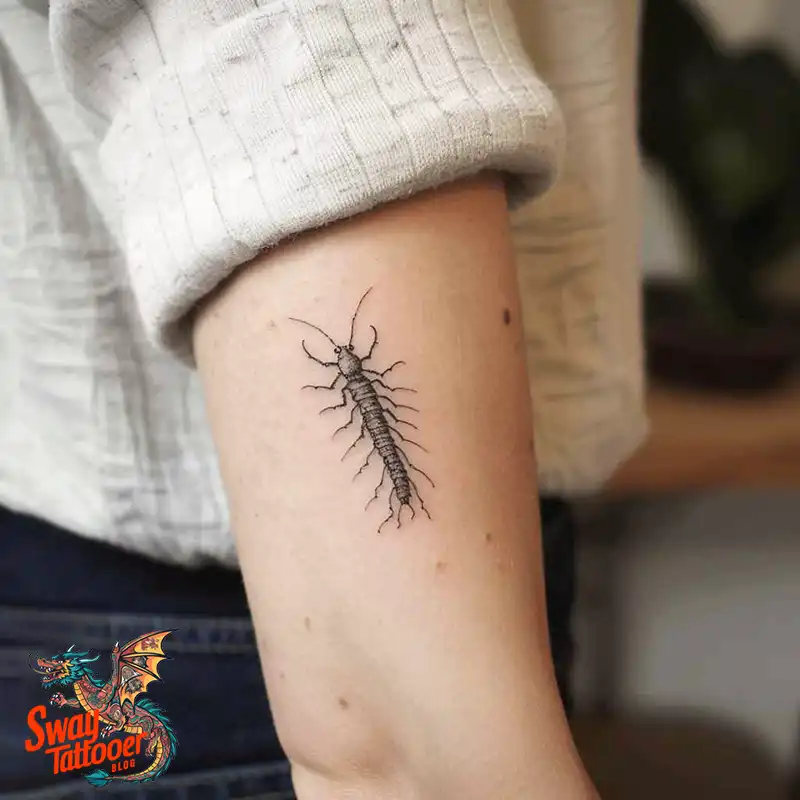
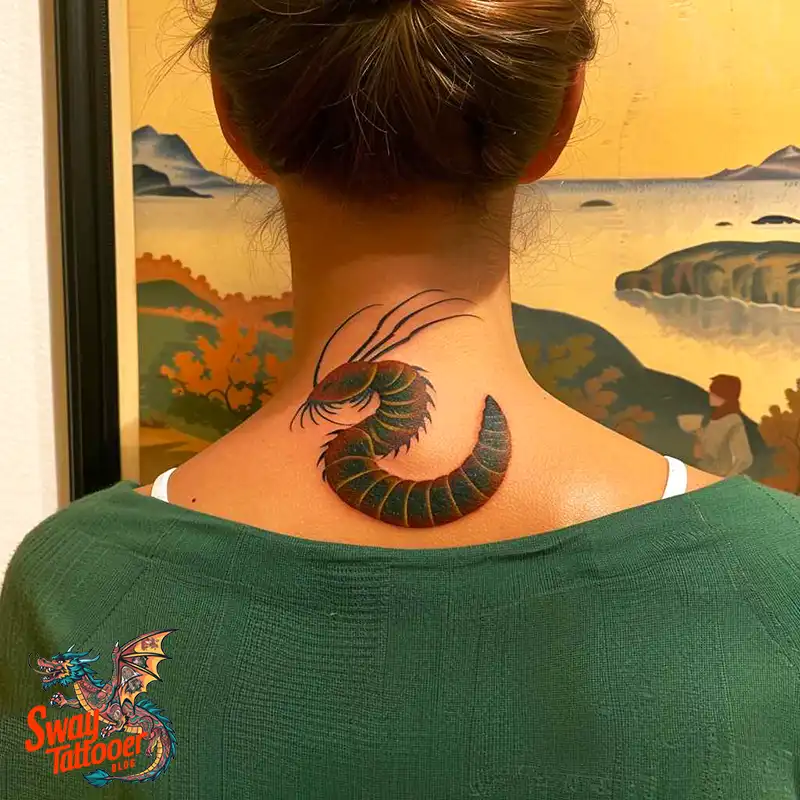
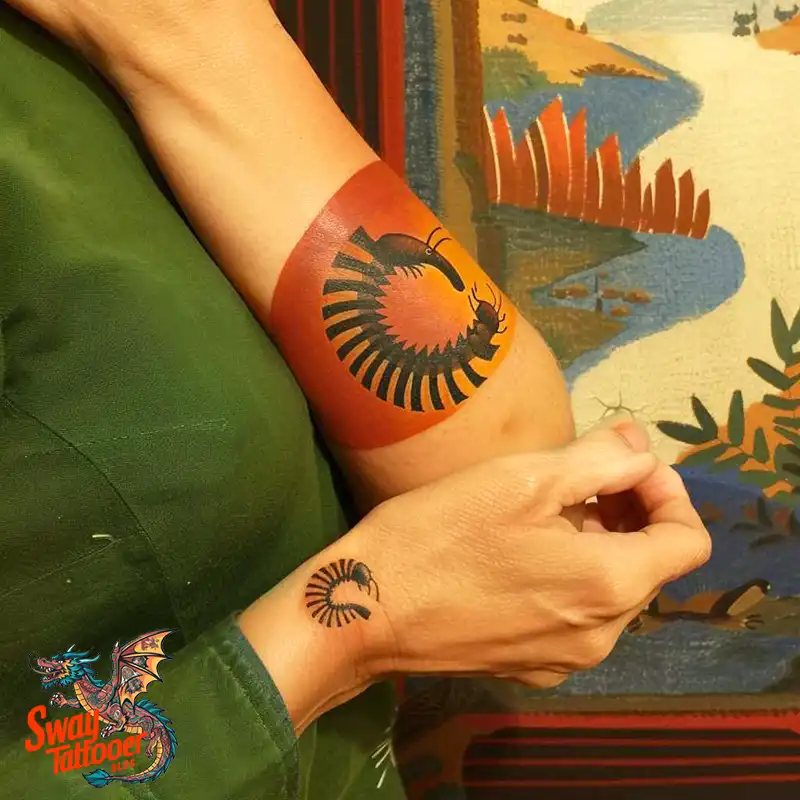
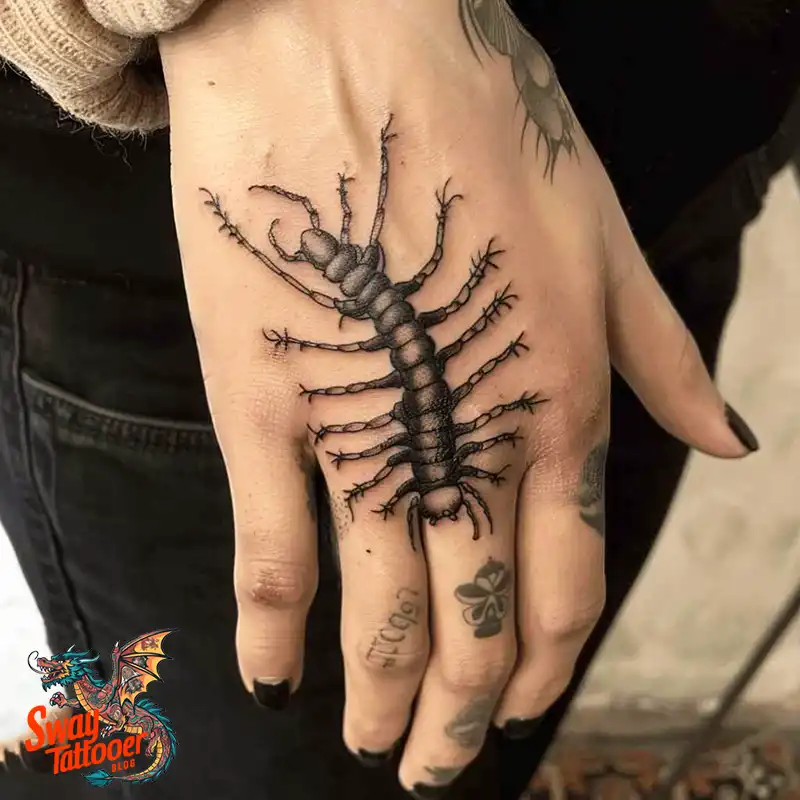
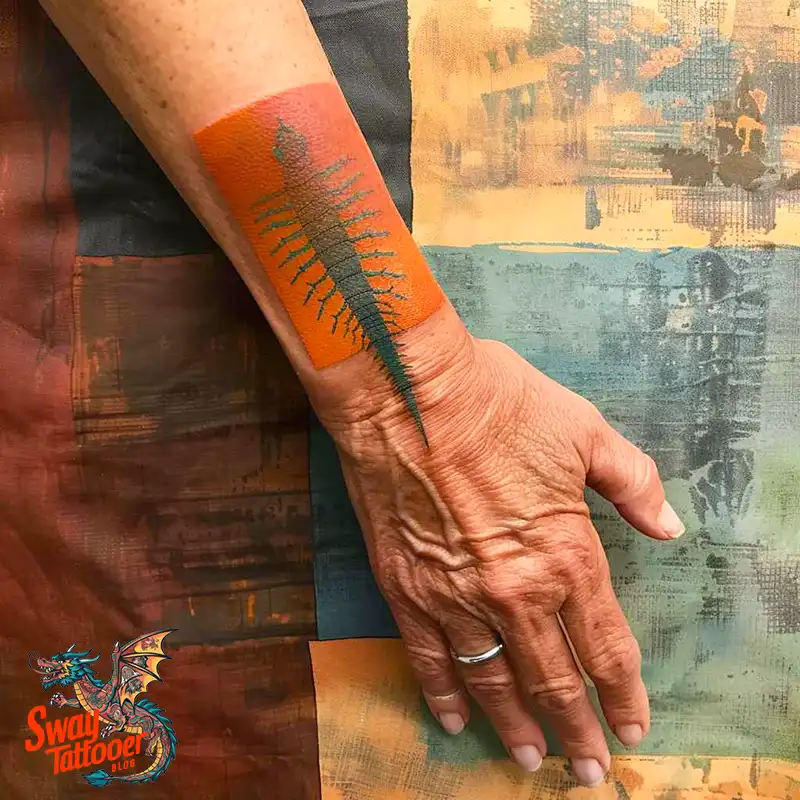
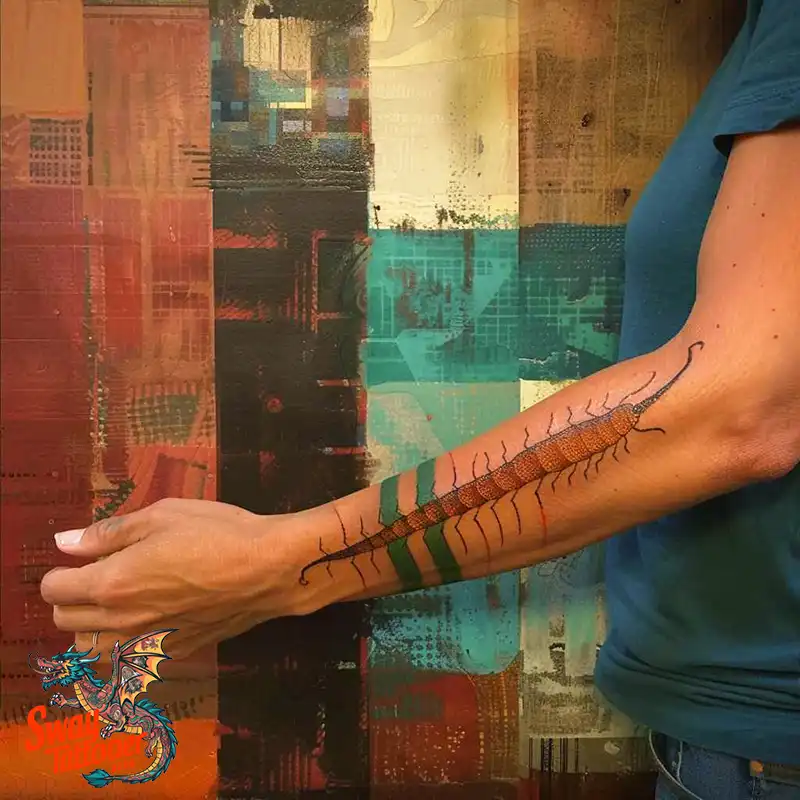
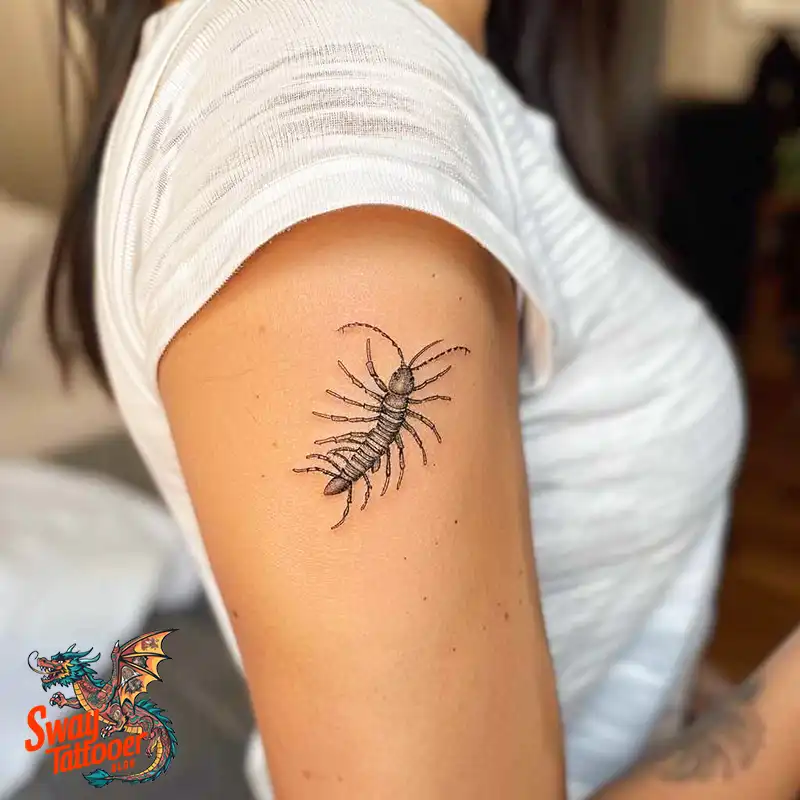


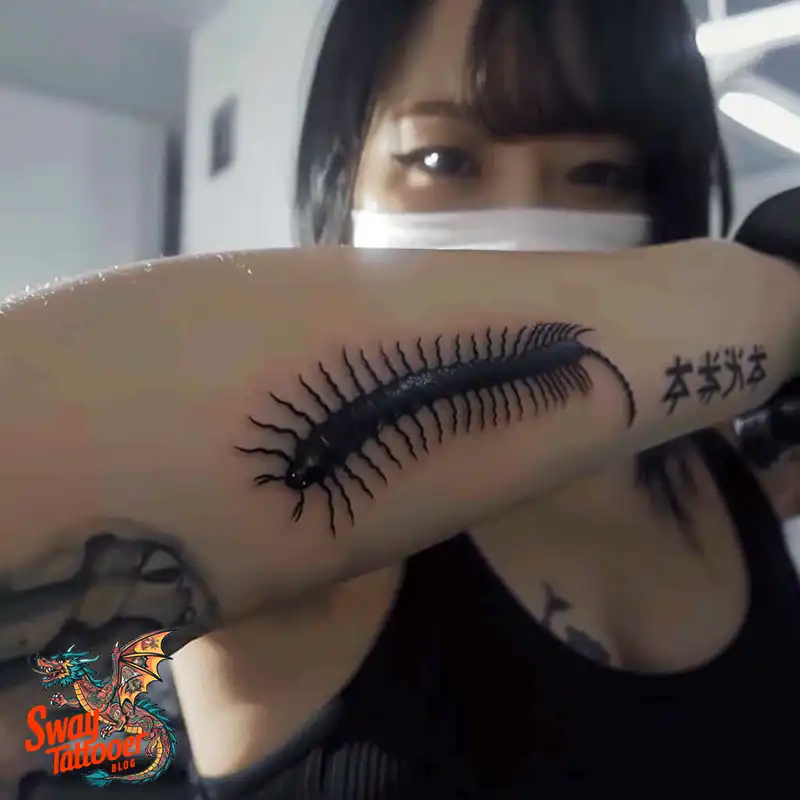

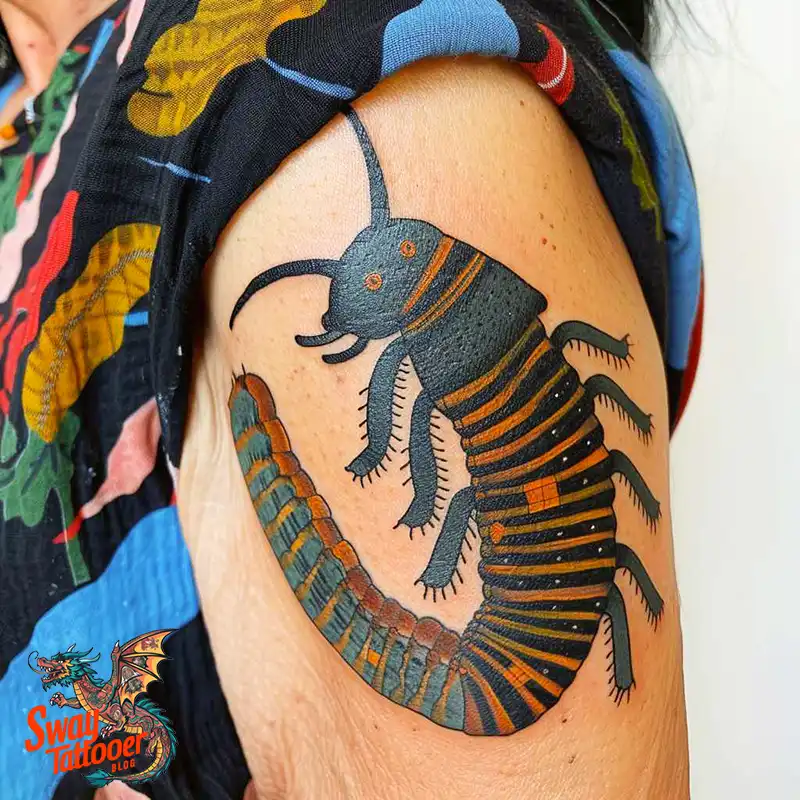
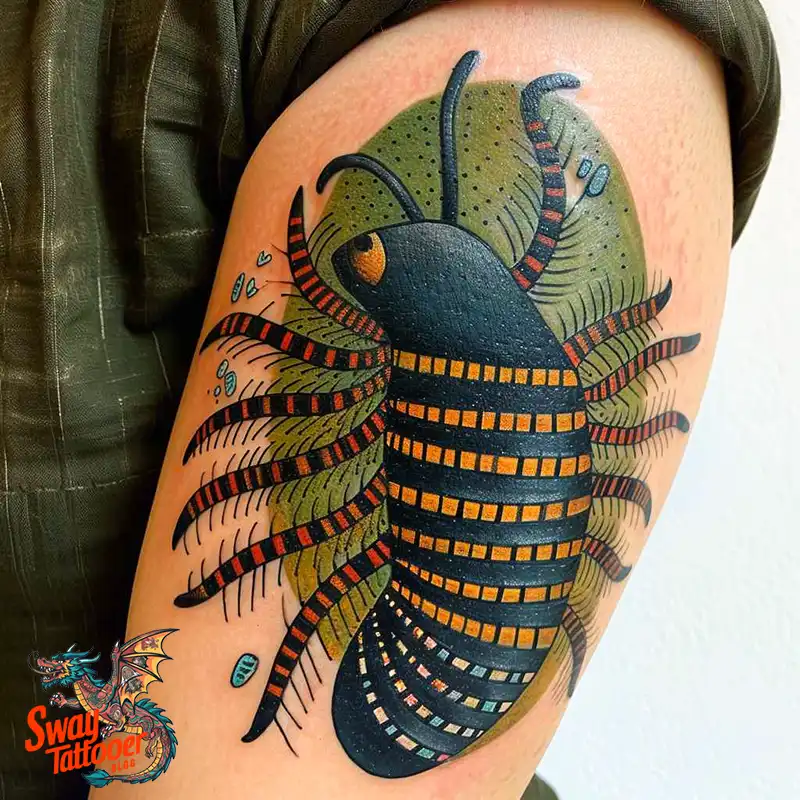
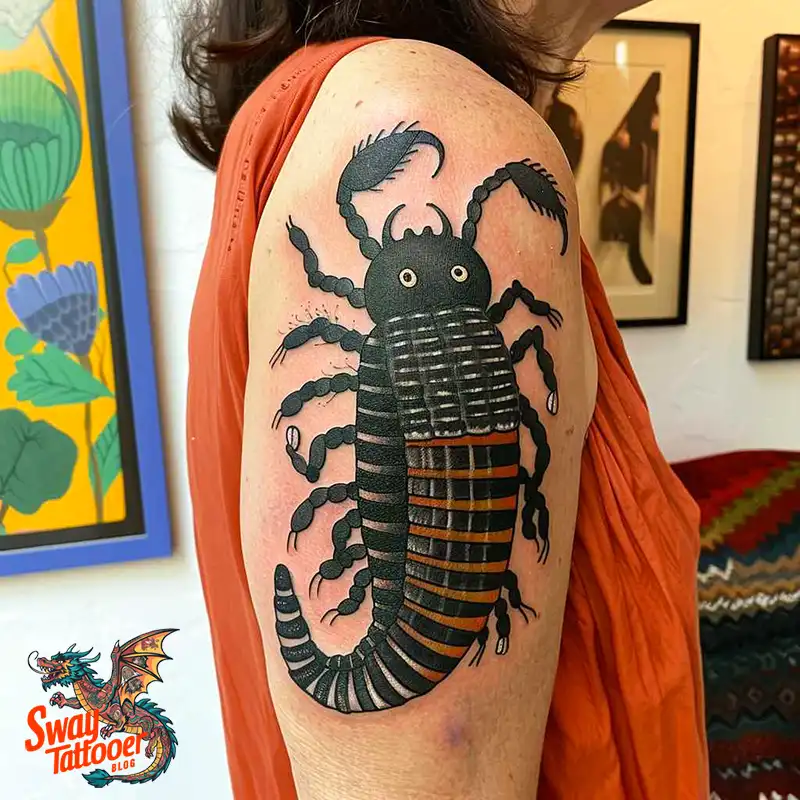


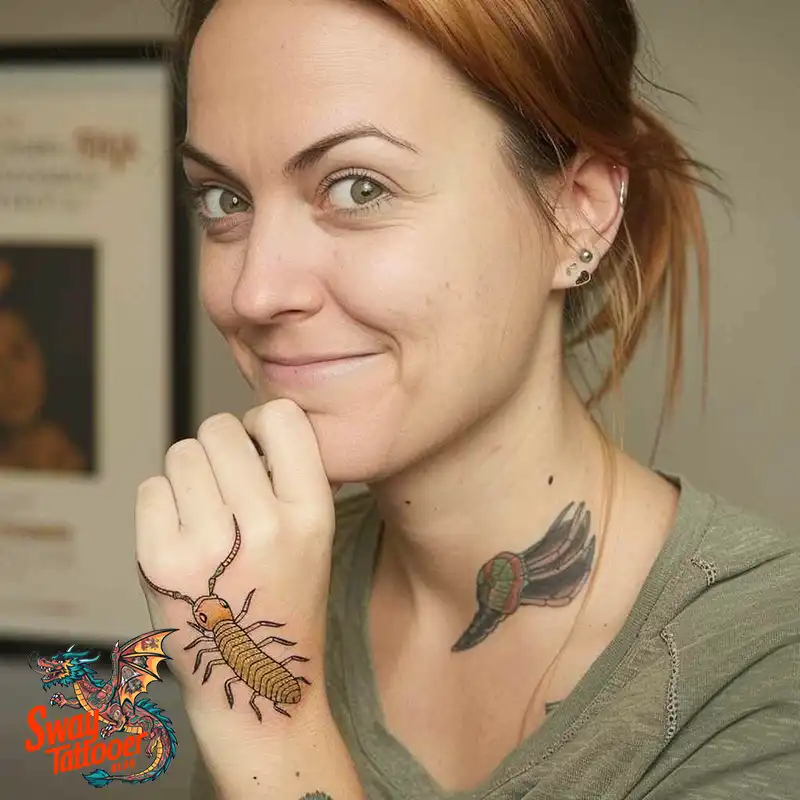

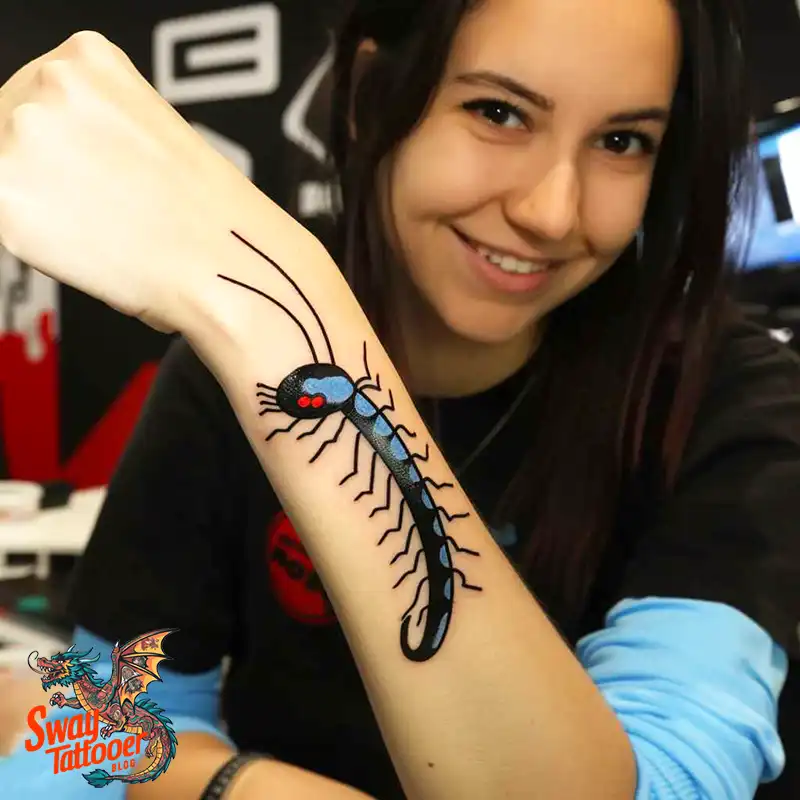
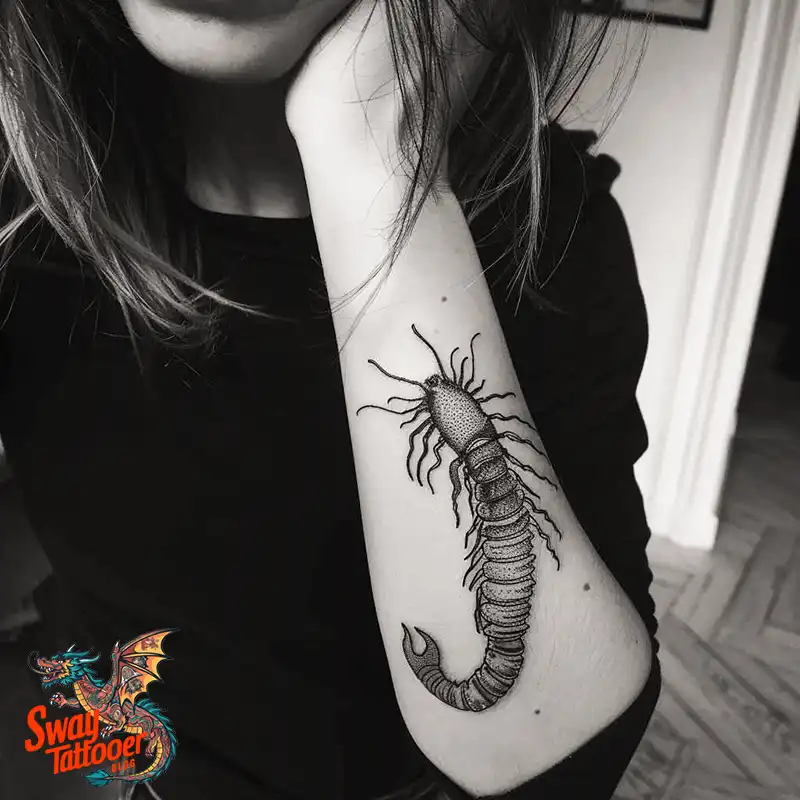
B. Concentrated Power: The Chinese Five Poisons
In China, the centipede is one of the Five Poisons (Wu Du). It means great strength and transformation.
- The Ultimate Survivor: In a ritual called Gu, venomous creatures fight until only one is left. The centipede is often seen as the one that survives this process.
- Mastery of Danger: This tattoo stands for concentrated power and being the ultimate survivor. It shows you won after a fierce battle. It means you can turn peril into a source of lasting power.
C. Protection and Ferocity: Polynesian Traditions
Centipede art is strong in Polynesian tattoo cultures.
- Fighting Spirit: In Marquesan culture, the centipede means a fierce fighting spirit. This animal is a strong hunter. This makes it a formidable force.
- Spiritual Guidance: In Samoan tradition, it is a sign of protection. It is called fa’atualoa, which means “long god”. It was also a mark for the fiercest warrior in some tribes.
Centipede Tattoo Design Ideas:
The centipede has a very long, segmented body. It has many tiny legs. This makes it a great challenge for the tattoo artist.
A. Traditional Japanese Irezumi
In Japan, this style uses bold, strong lines. It incorporates the centipede into larger art, like sleeves.
- The artist uses dense lines and colors. This makes the centipede look bold and strong.
- Japanese Irezumi is great for high longevity because the bold lines resist blurring.
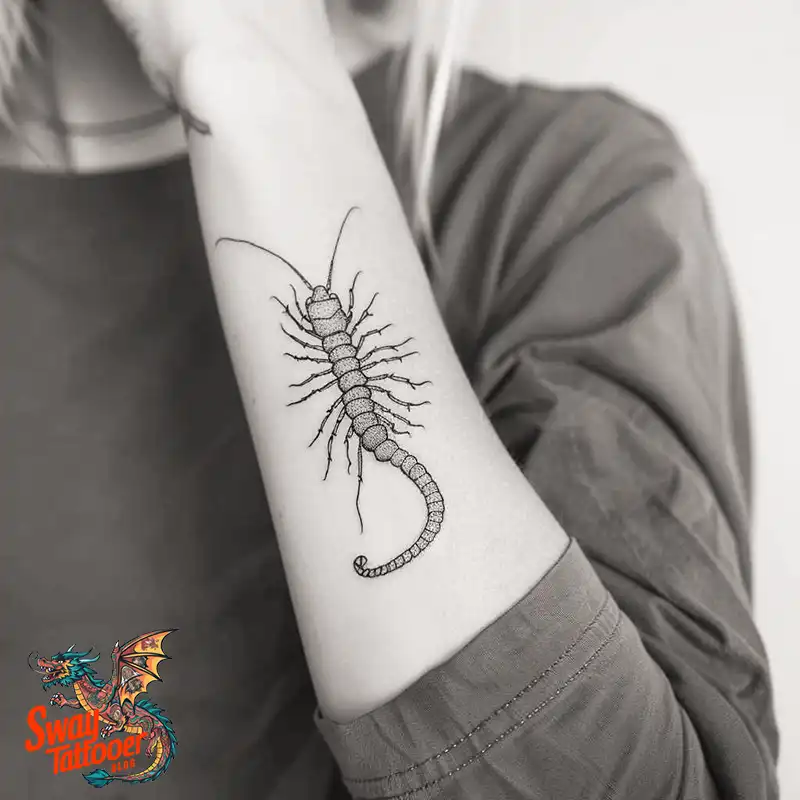
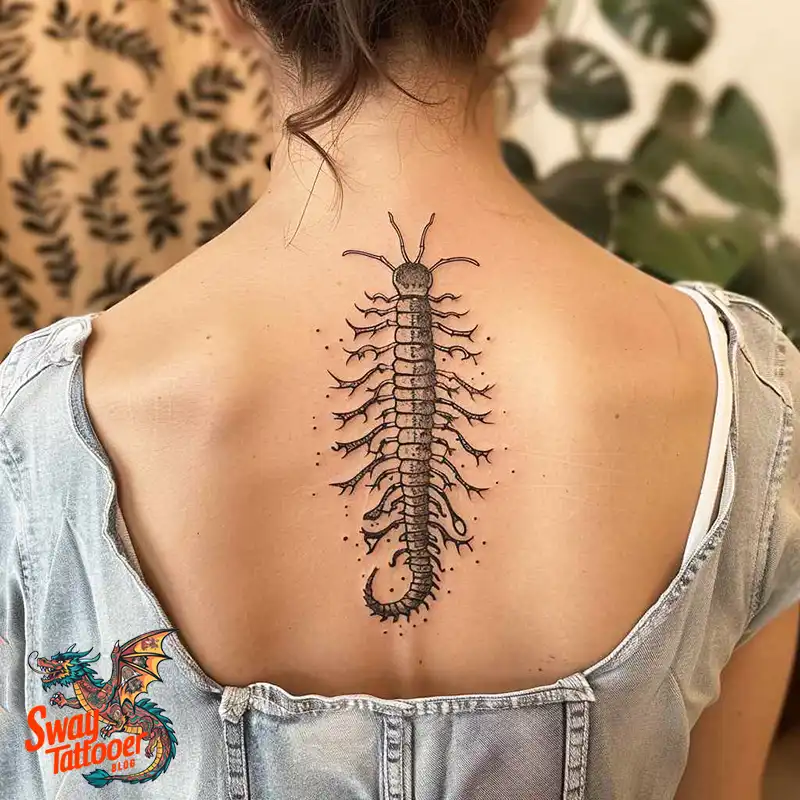


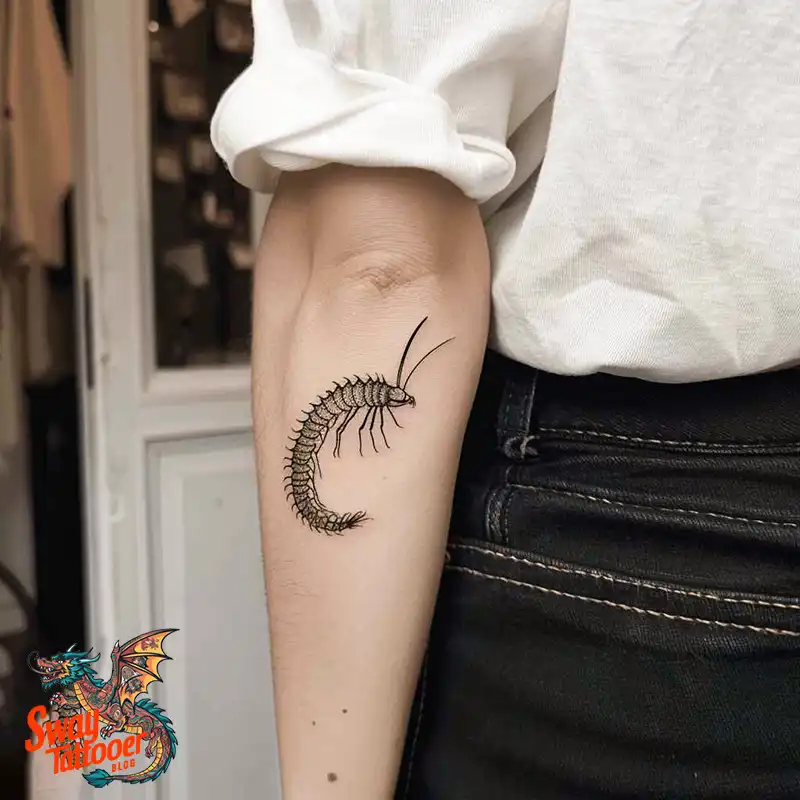
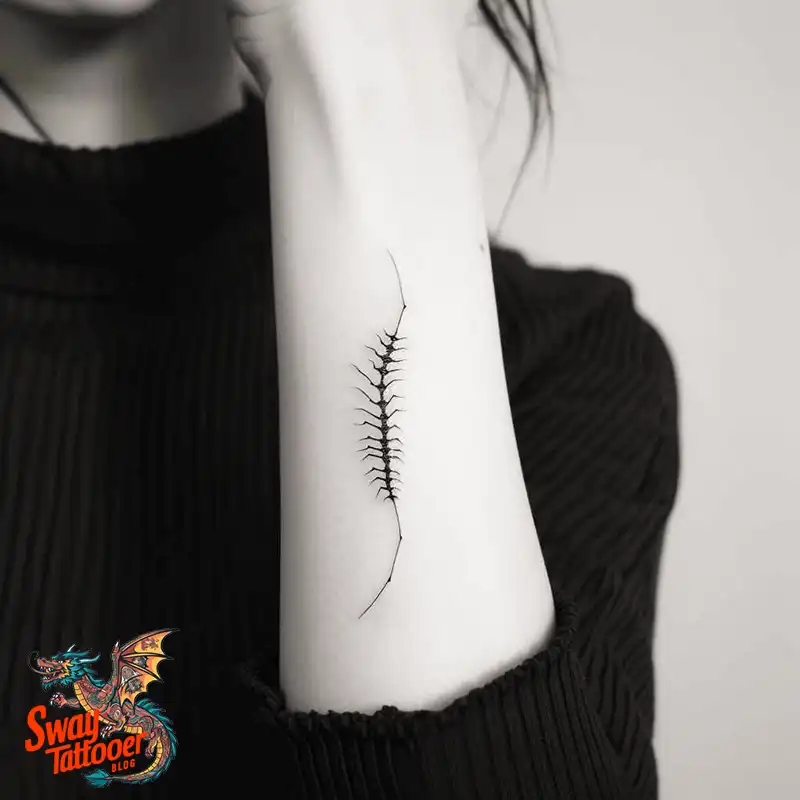
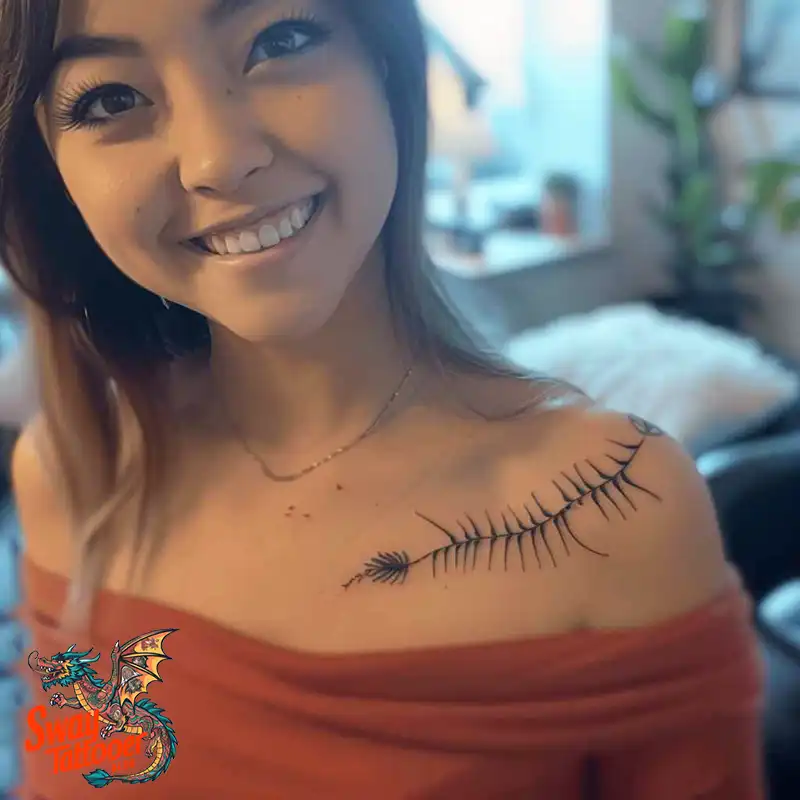
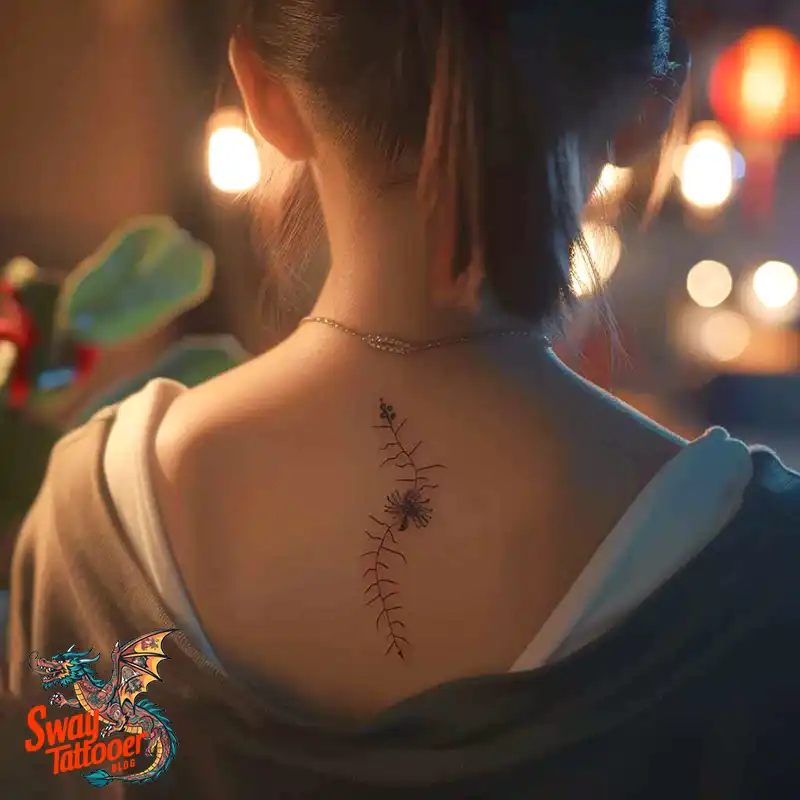

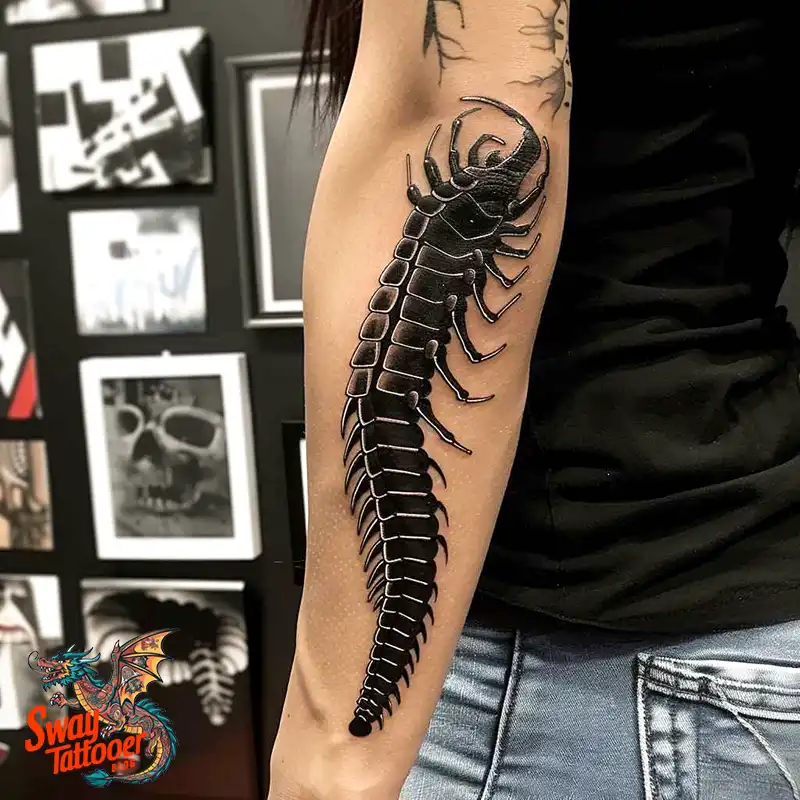
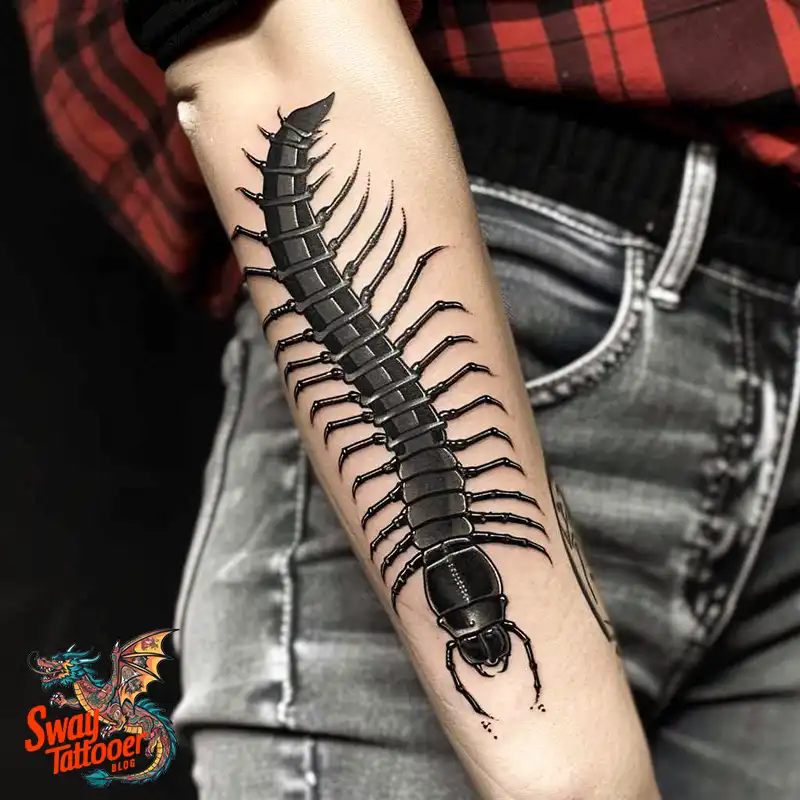
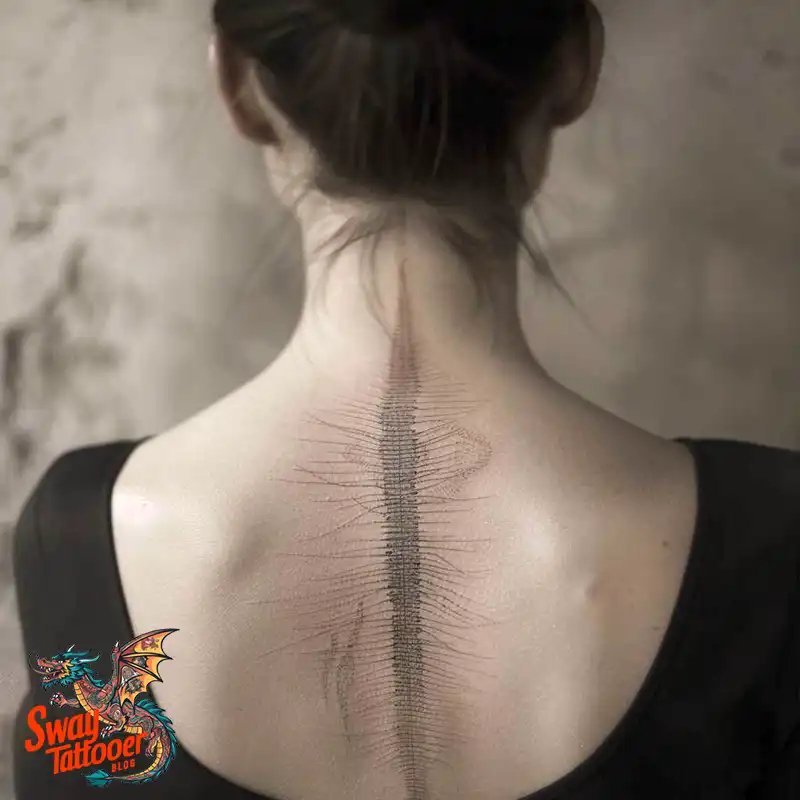

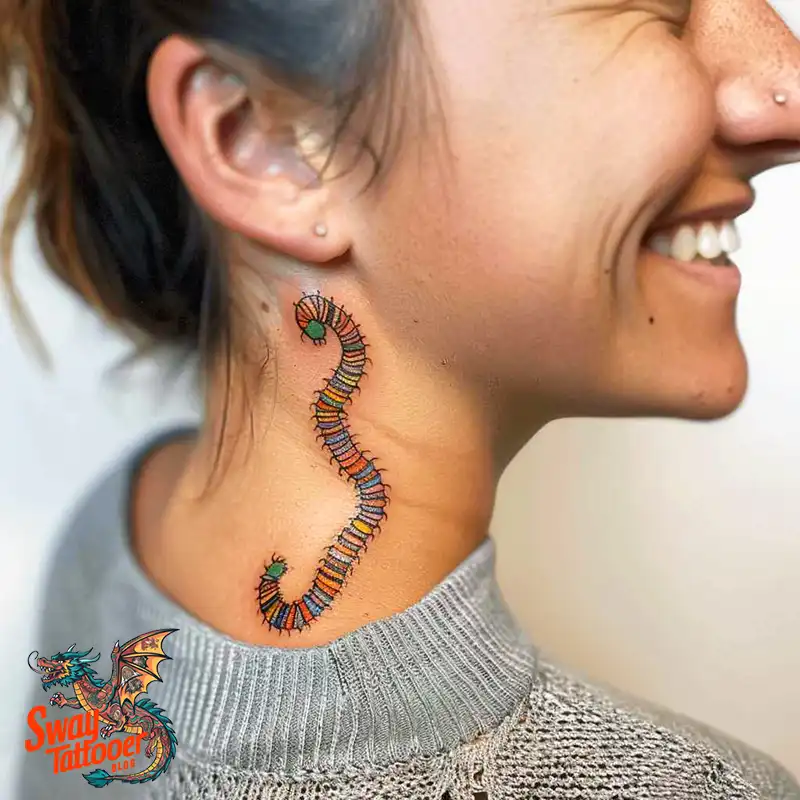

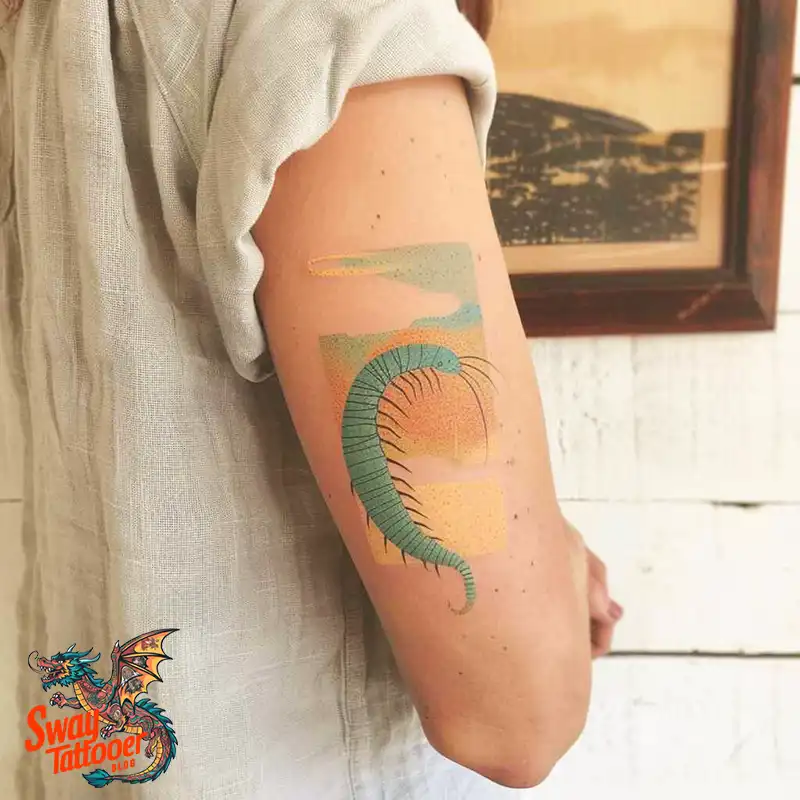

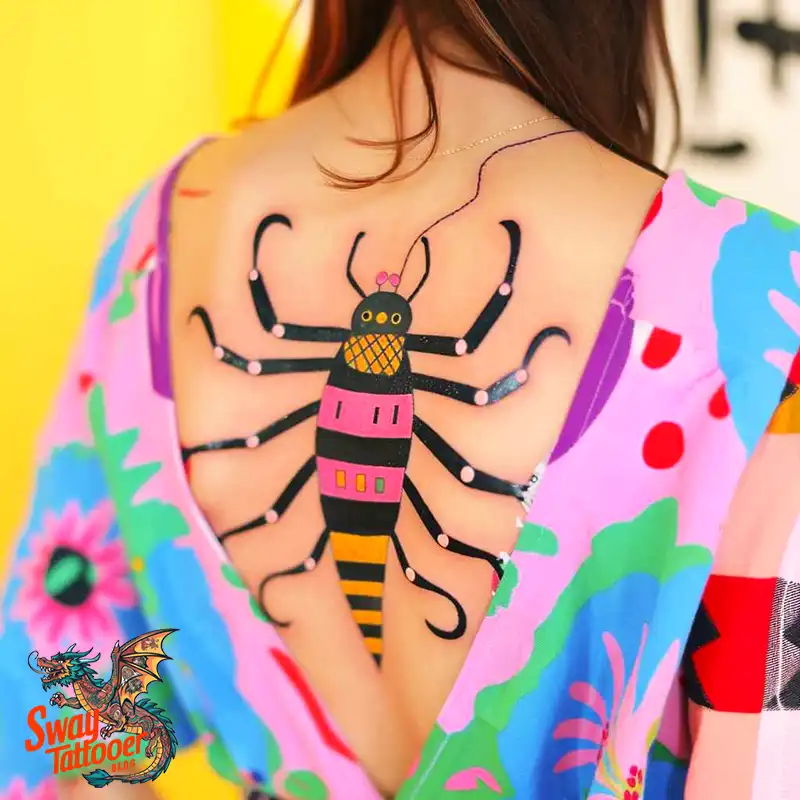
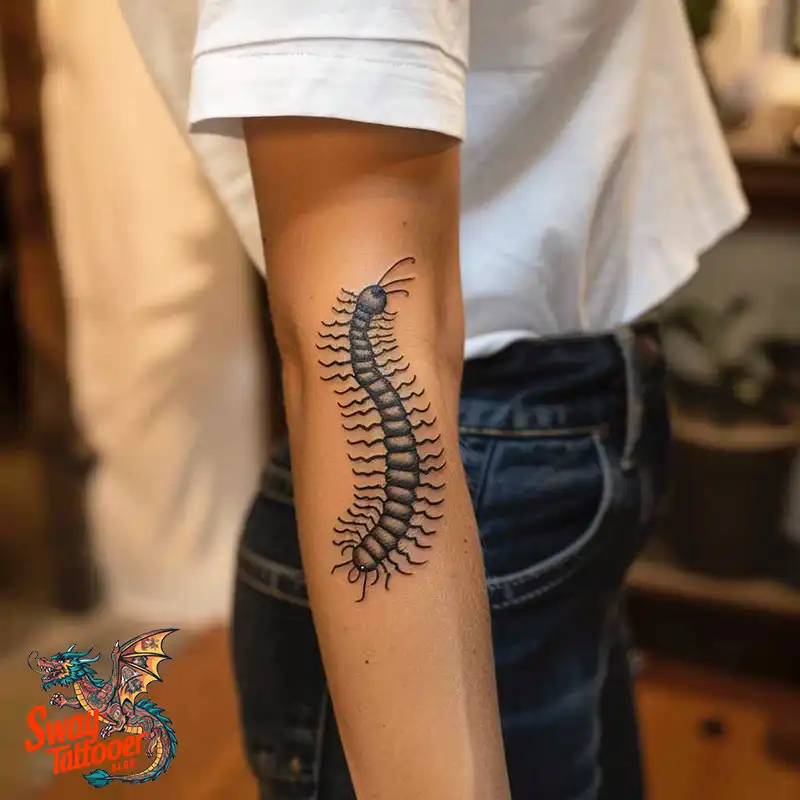


B. Hyperrealism and 3D
The Hyperrealism style tries to make the centipede look exactly like it is crawling on your skin.
- The Look: These designs use detailed black and gray shading. This creates a strong 3D illusion.
- The Difficulty: This requires extreme skill. The artist must perfectly draw every tiny segment and leg.
C. Fine Line and Microscopic Detail
This style is challenging to do. It uses very thin lines.
- The artist must use thin needles to draw the numerous tiny legs.
- Warning: Because the lines are so thin, this style is prone to fading and blurring quickly. It needs a specialist artist and careful, constant aftercare.
D. Blackwork, Tribal, and Geometric Styles
- Blackwork: This uses dense black ink to create a dark, mysterious look. It makes the centipede’s silhouette look sleek and stealthy.
- Tribal and Geometric: These styles use abstract shapes and patterns. They emphasize the centipede’s segmented structure. This gives the art a sleek, modern look. This style highlights the creature’s structural power.
Placement Strategies:
The centipede’s long shape is great for spots that curve naturally on the body. This makes the design look like it is moving.
The best and most popular spots use the centipede’s length to create a wrapping effect. This shows the creature’s speed and aggressive movement.
- Forearm and Bicep: These spots are great for wrapping the centipede around the muscle. This gives the design a dynamic, moving look.
- Leg and Calf: This spot gives the most room for a long design. You can wrap the centipede around your leg. This reinforces the meaning of continuous progress.
- Torso or Back: These spots are good for larger designs that tell a bigger story, often with other mythological figures.
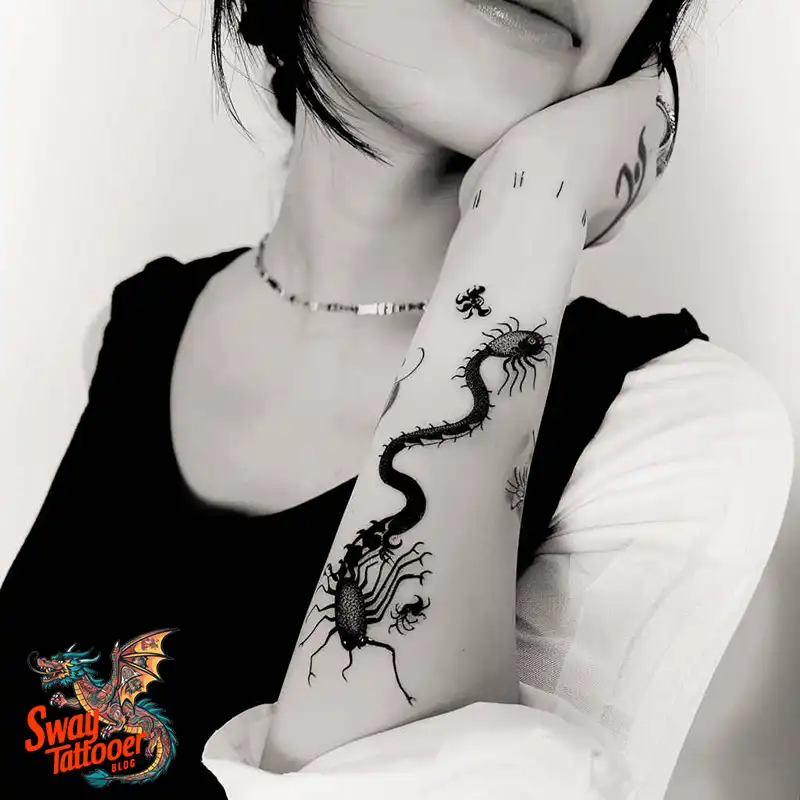
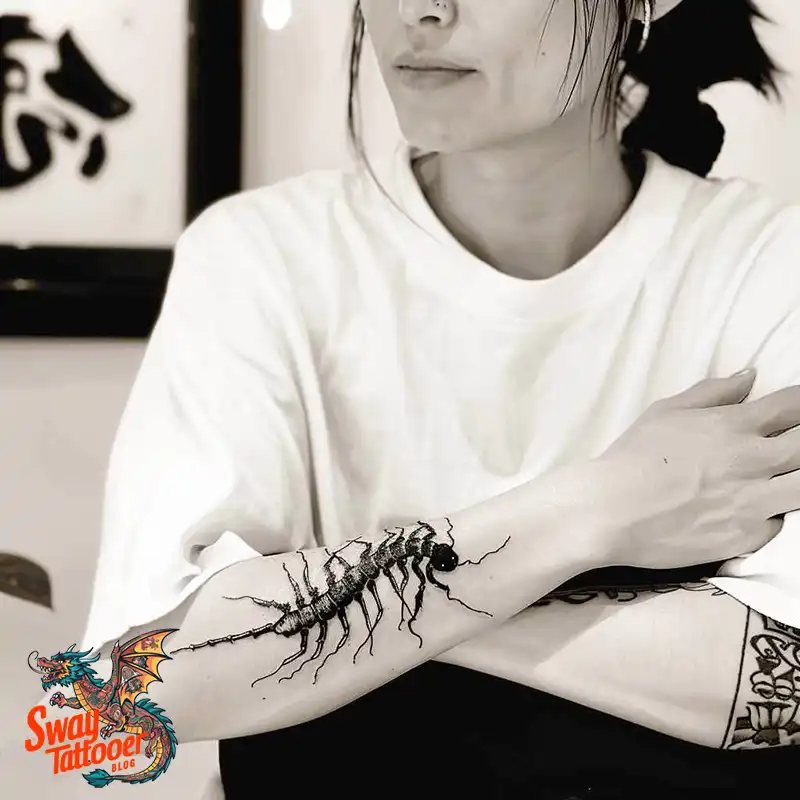
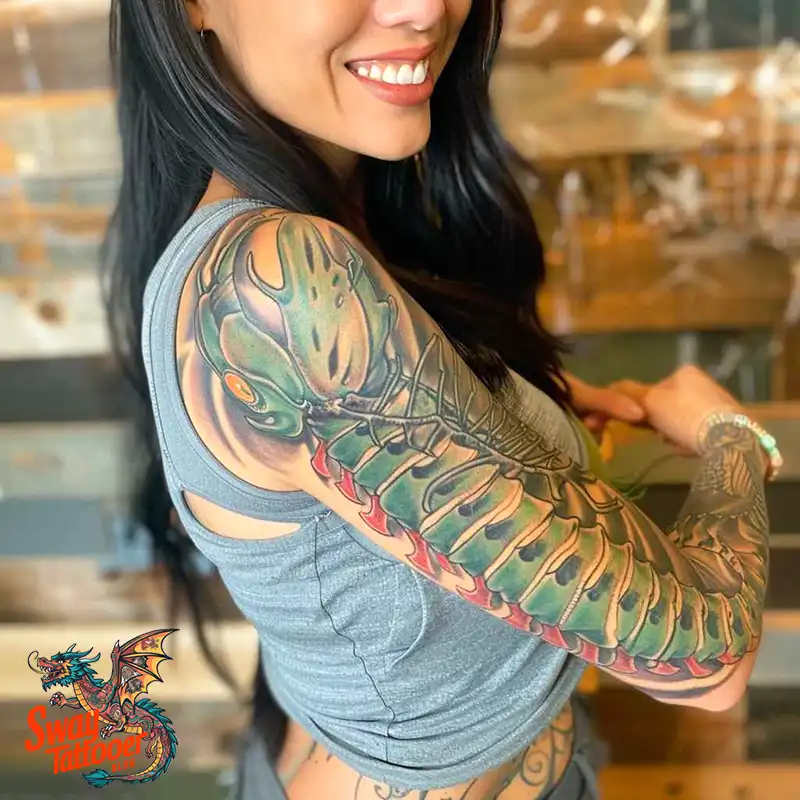


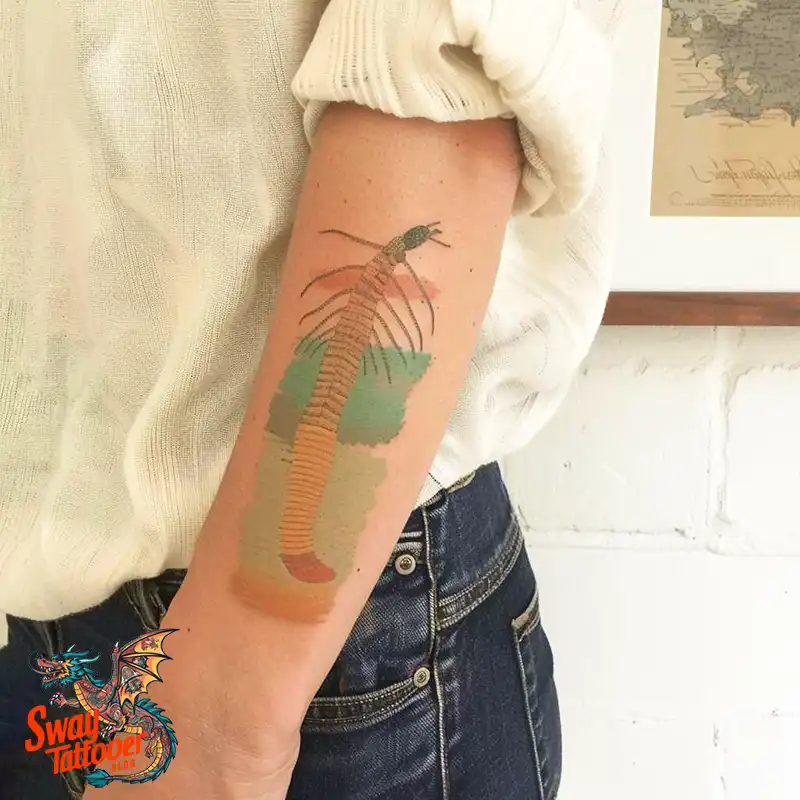
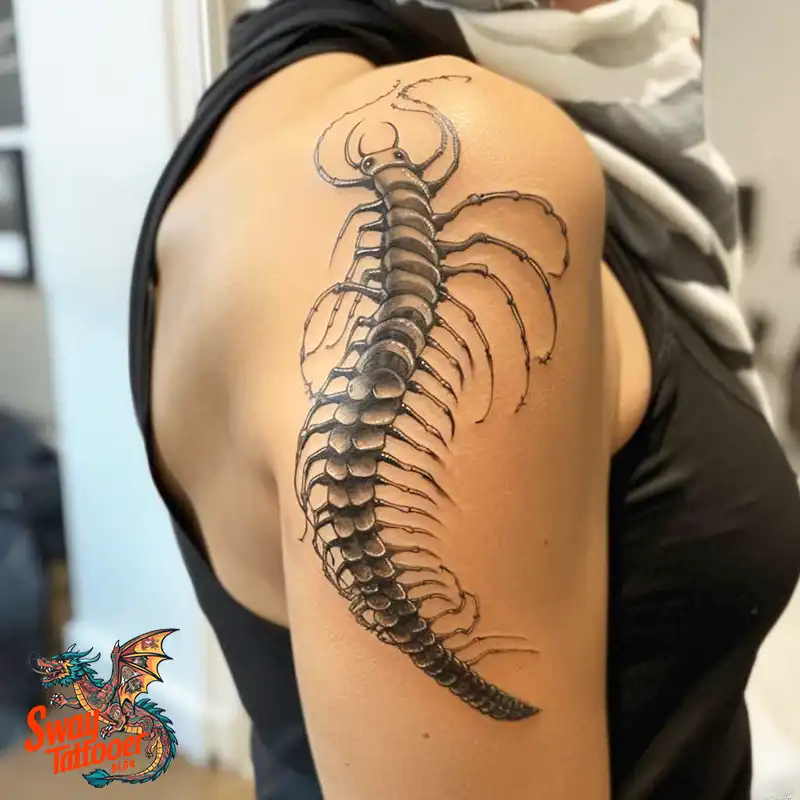
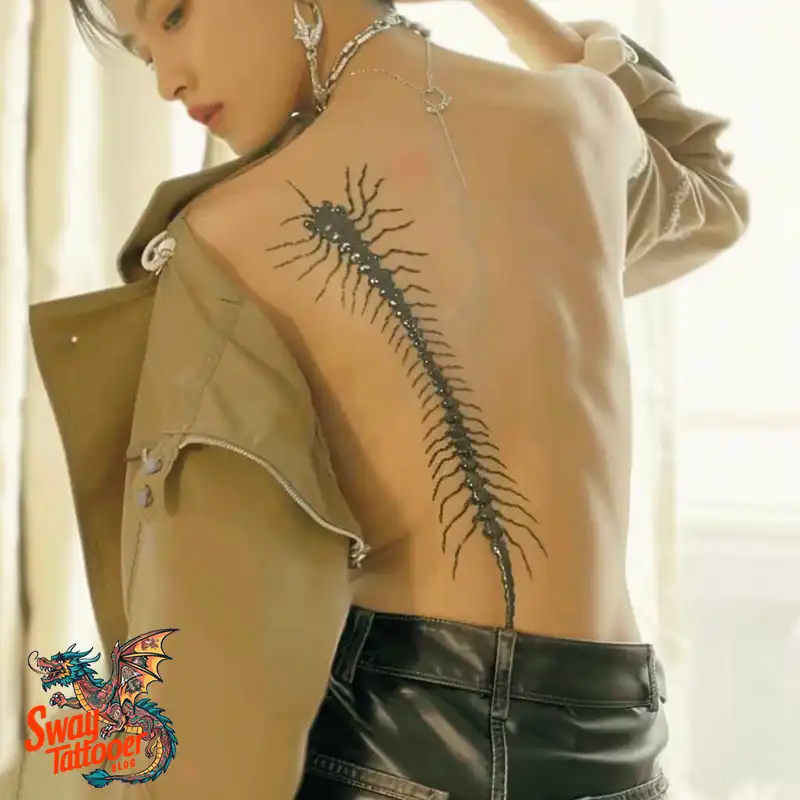


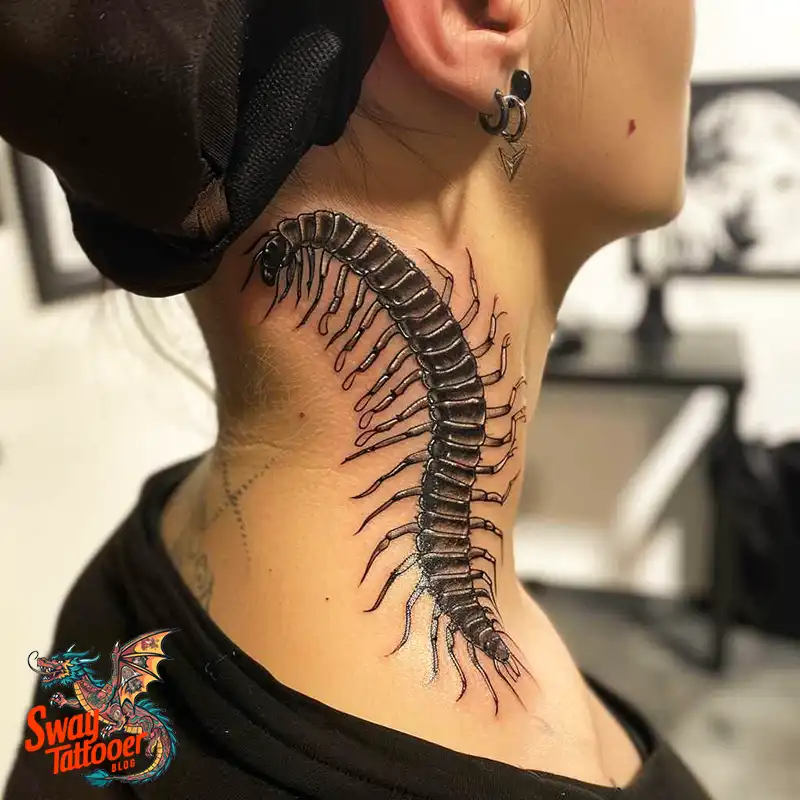

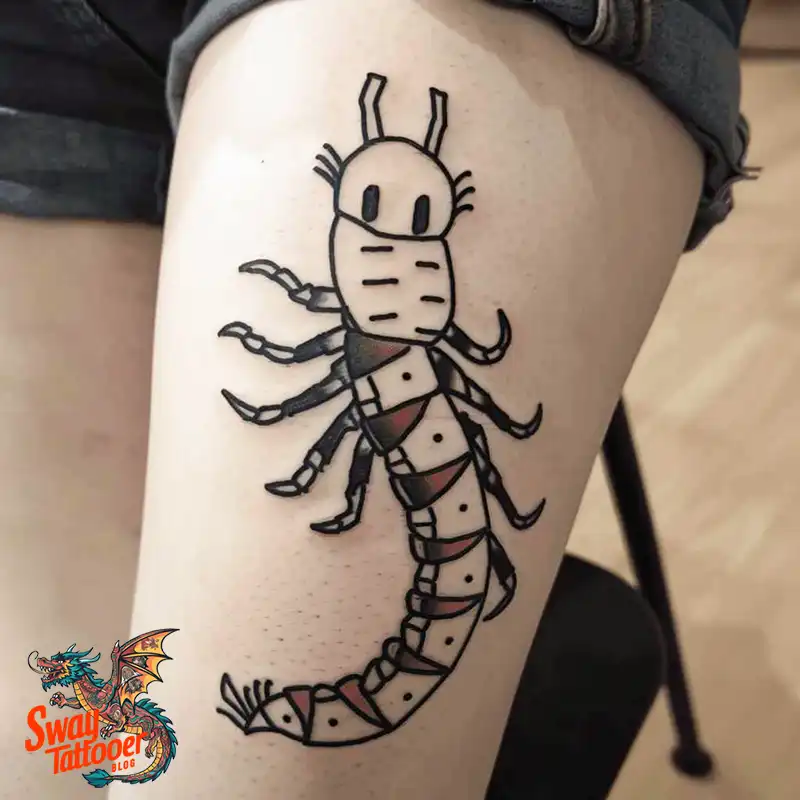


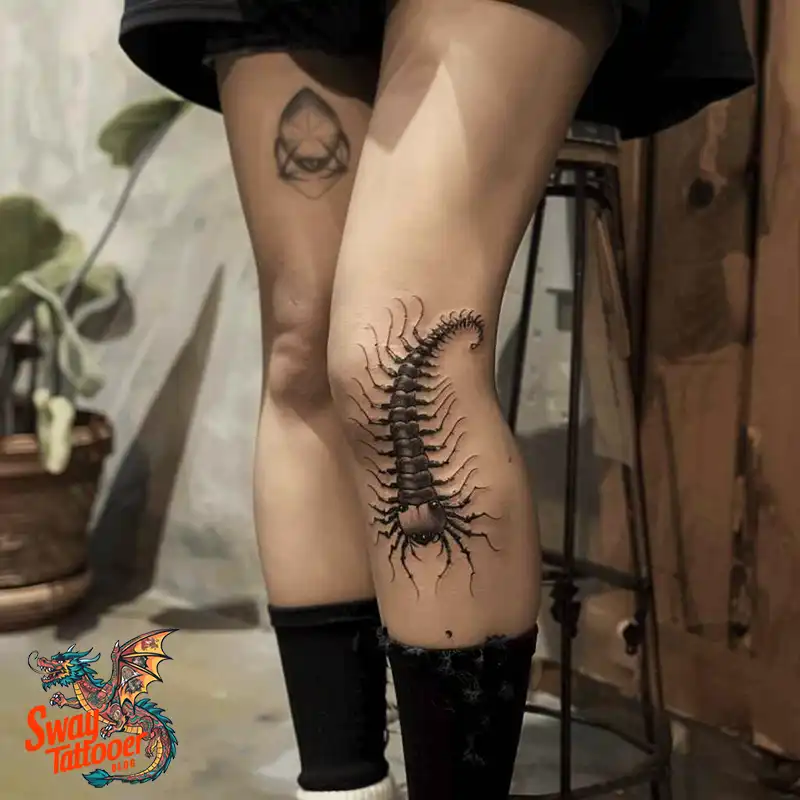
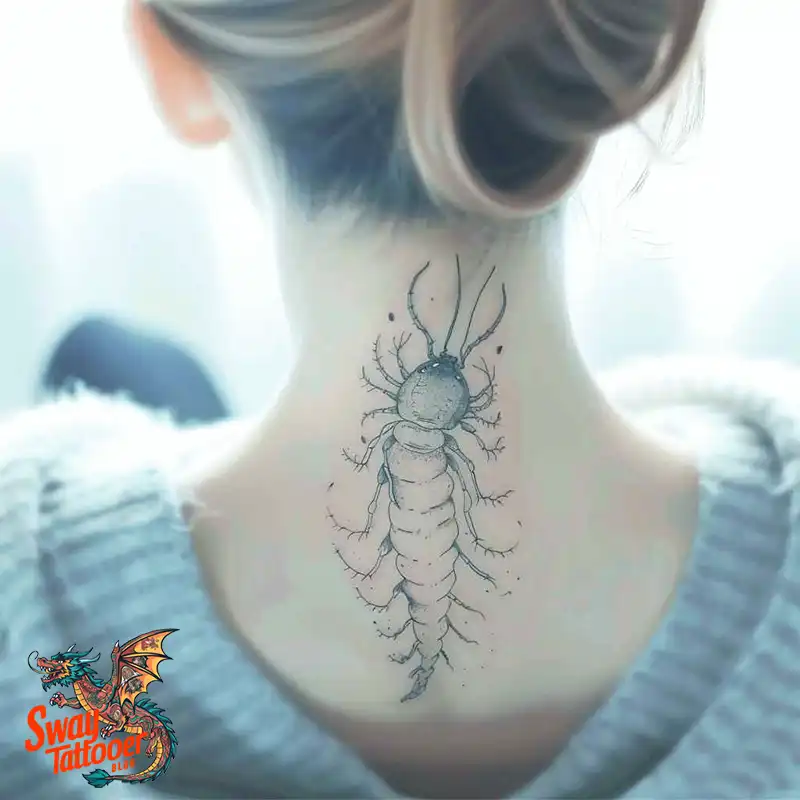

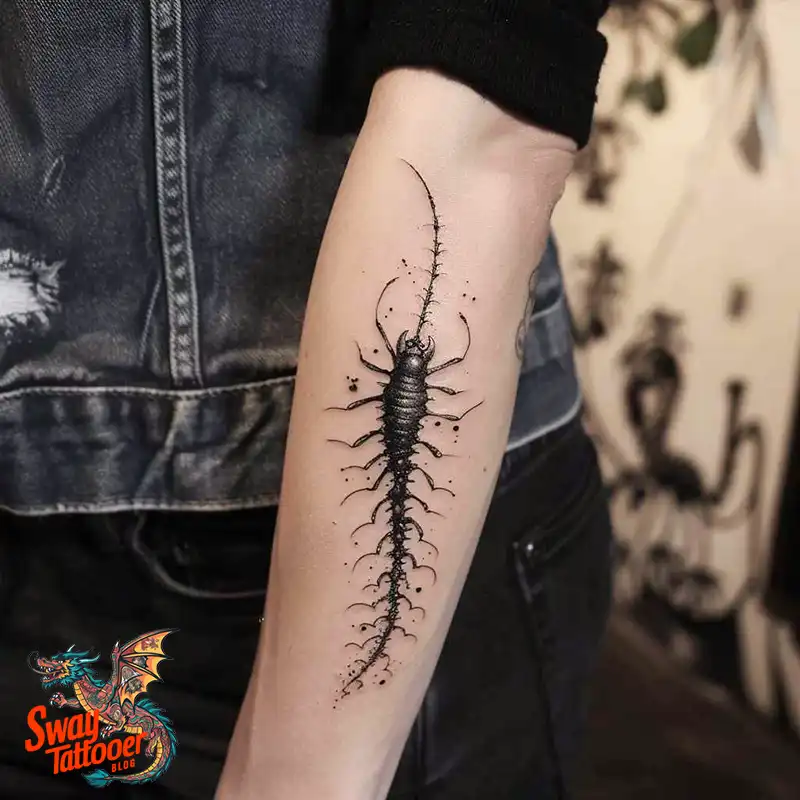
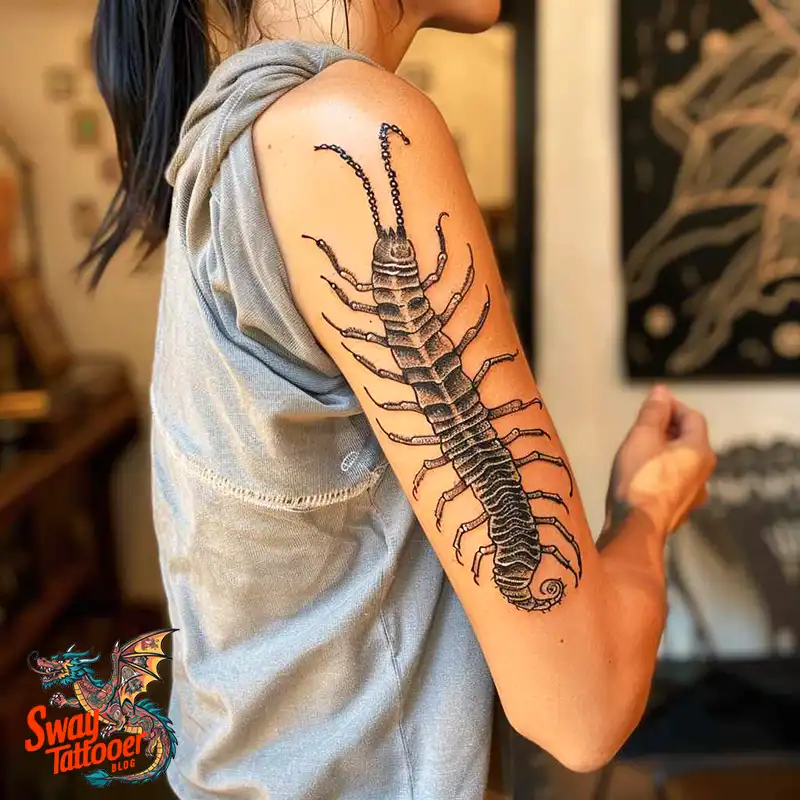

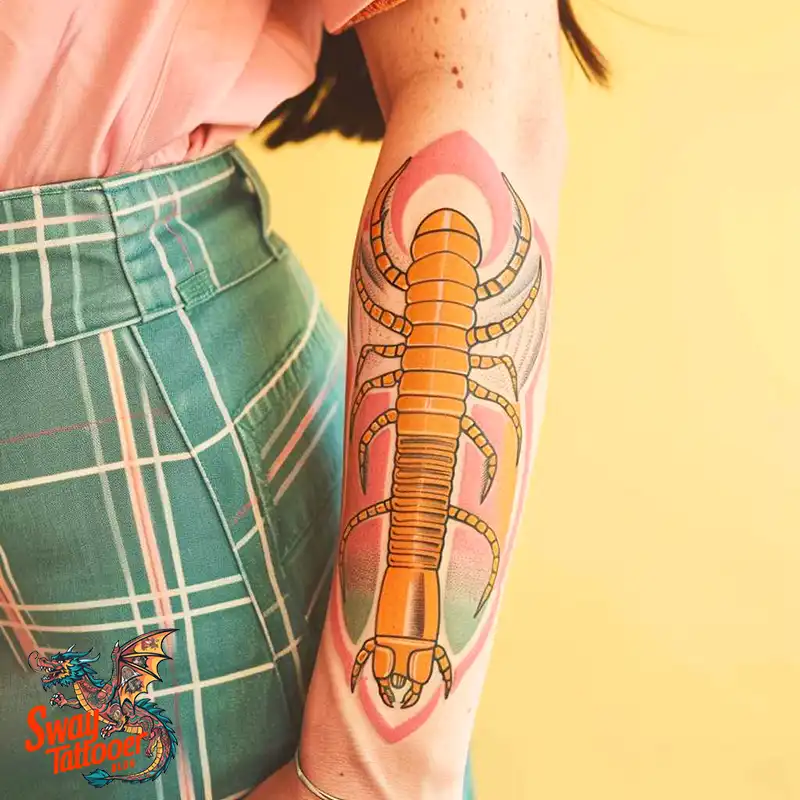
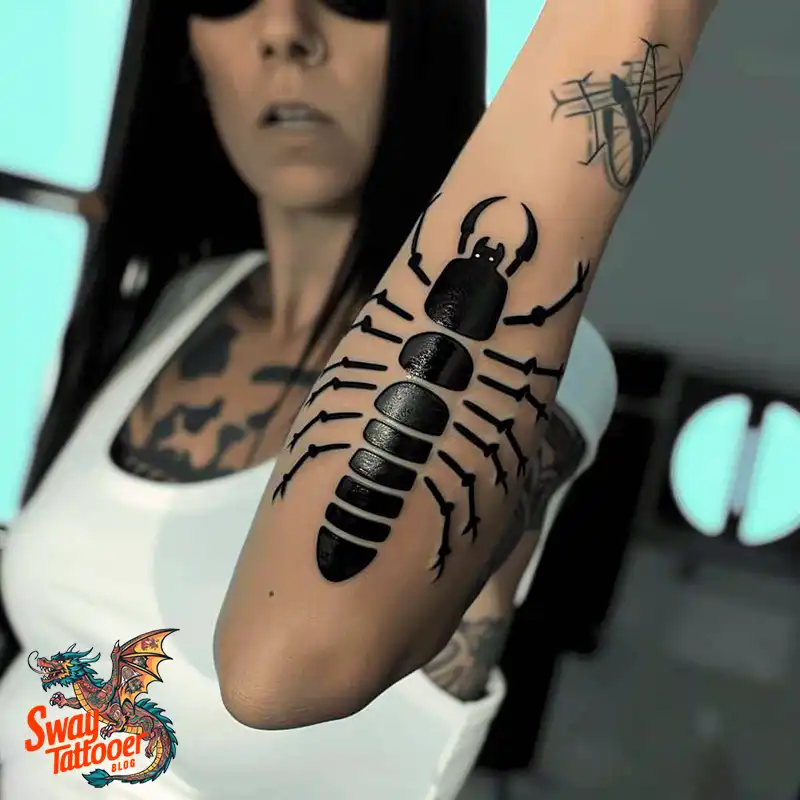
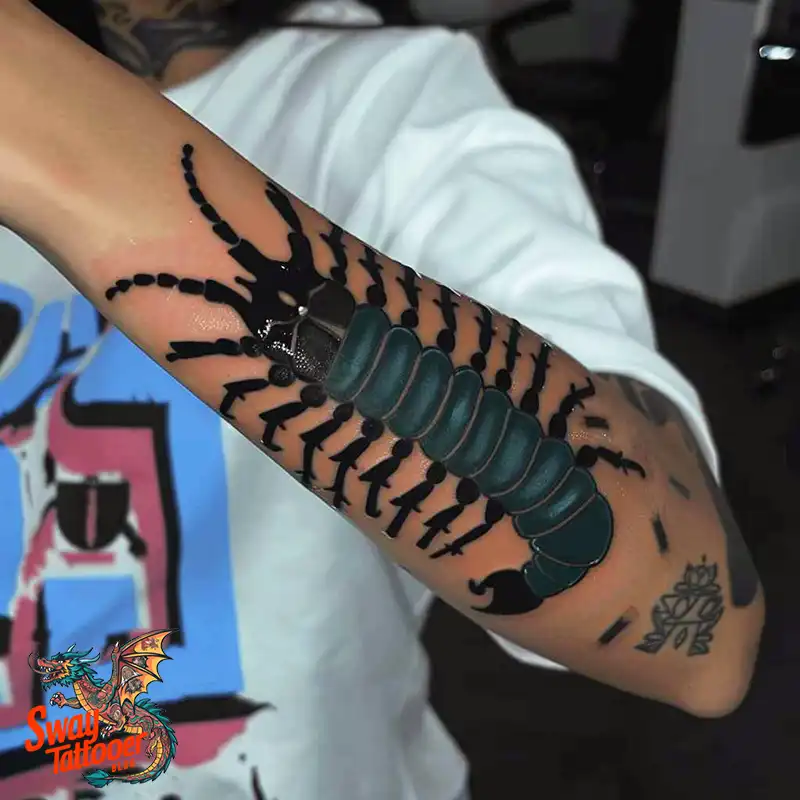
The Financial Commitment:
A centipede tattoo requires a big financial investment. This is because of the design’s complexity and the repeating details.
- Expert Cost: You must hire an experienced artist. Professionals usually charge between $150 and $300 per hour. For the highest skill, rates can be even higher.
- The Time Needed: A high-level, medium-sized centipede design can cost between $350 and $850. Larger, complex wrapping designs can cost $1,000 to over $1,900. This cost covers the many hours needed to draw all the segments and legs correctly.
Aftercare for Longevity:
Proper aftercare is crucial for centipede tattoos. The fine lines and delicate details are easily ruined by friction and sun exposure.
A. Immediate Healing Protocol
- Clean and Moisturize: Wash the tattoo gently every day with mild soap. Apply a thin layer of unscented lotion. Do not use too much, as it can cause uneven healing.
- Avoid Damage: Do not pick at any scabs or peeling skin. Avoid soaking the tattoo in water (no pools or baths). This is key to protecting the intricate details.
B. Long-Term Maintenance for Detailed Work
Long-term care is mandatory for the delicate design to stay sharp.
- Sun Protection: Sunlight is the biggest cause of fading. Once the tattoo is healed, you must apply SPF 30 or higher sunscreen every day. Avoid tanning beds completely.
- Touch-Ups: Fine line tattoos often need touch-ups every few years to keep the clarity and sharpness of the delicate legs.
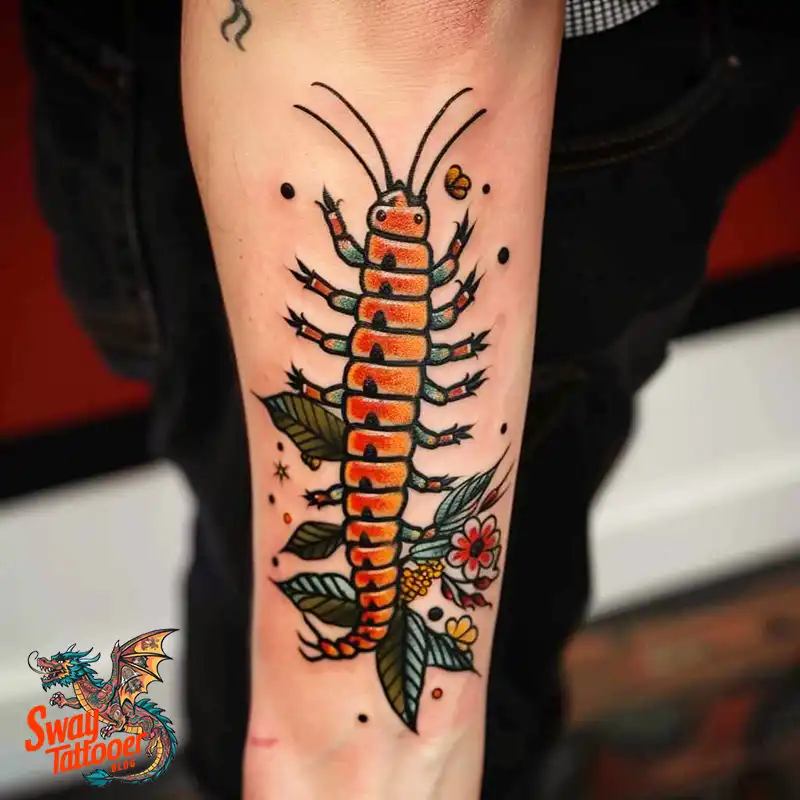
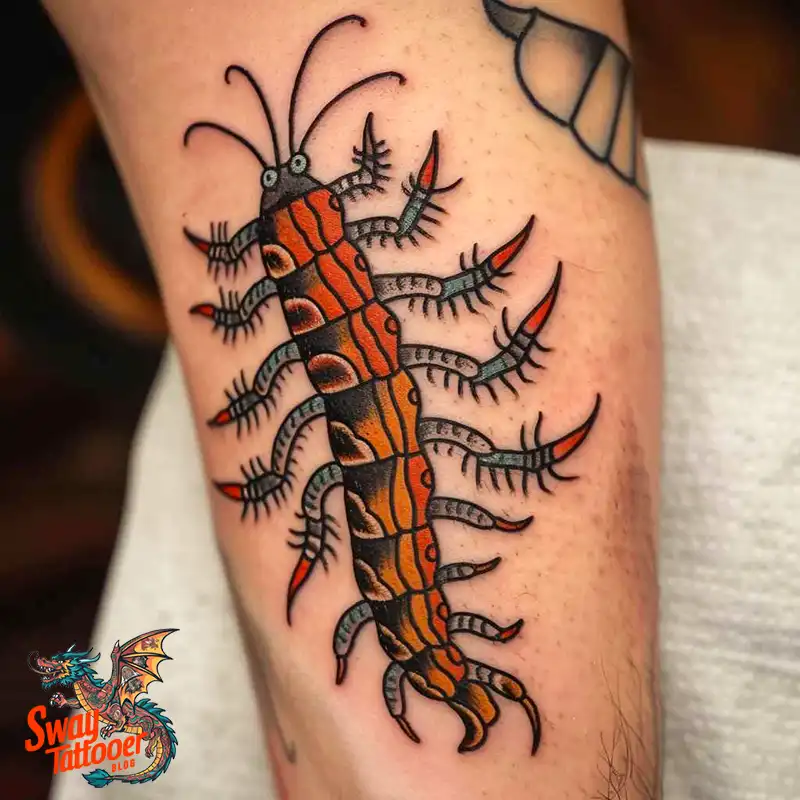


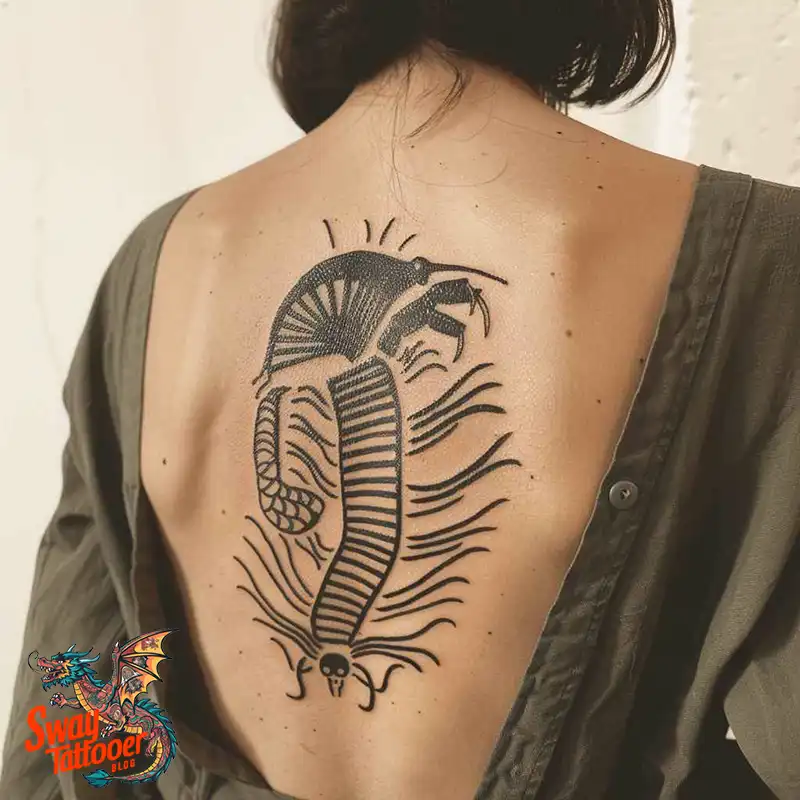

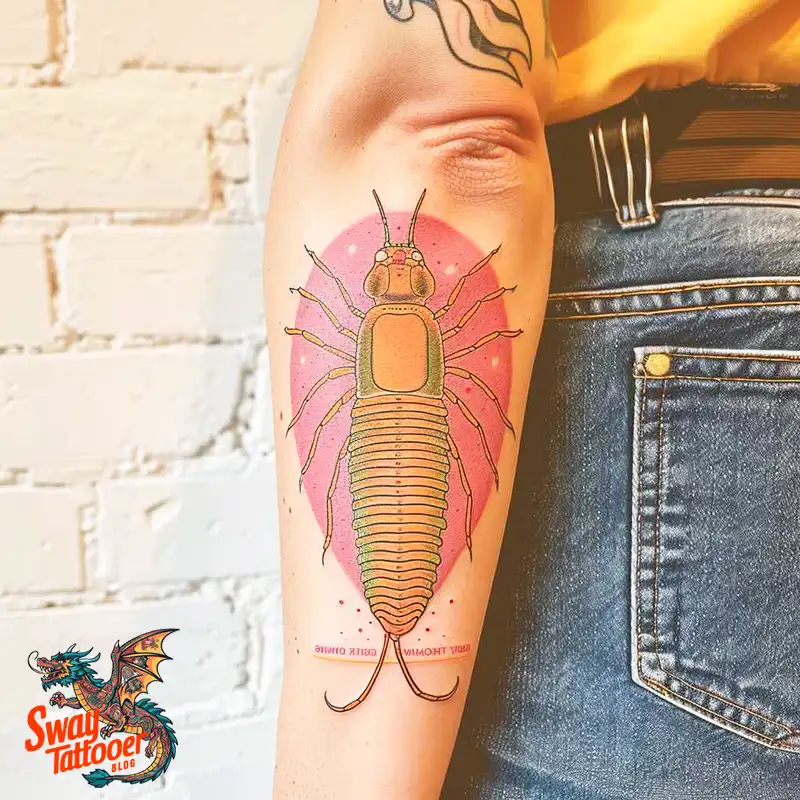
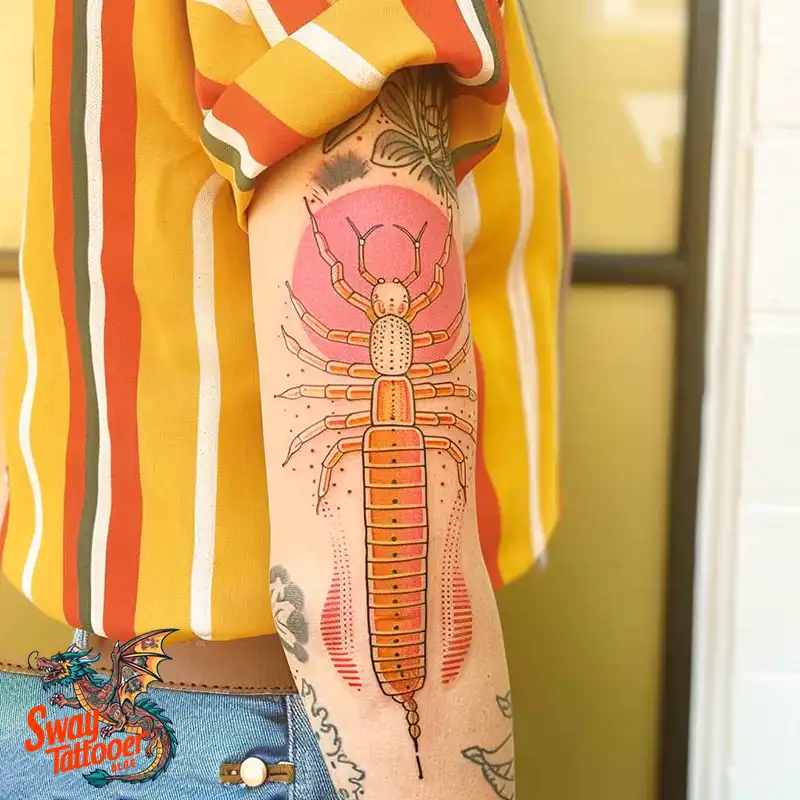




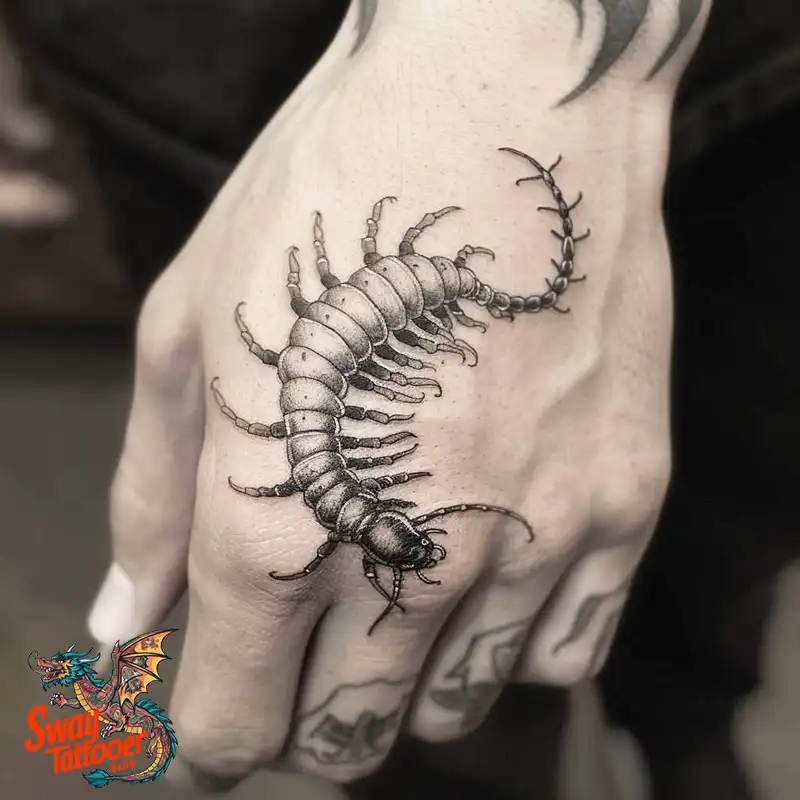

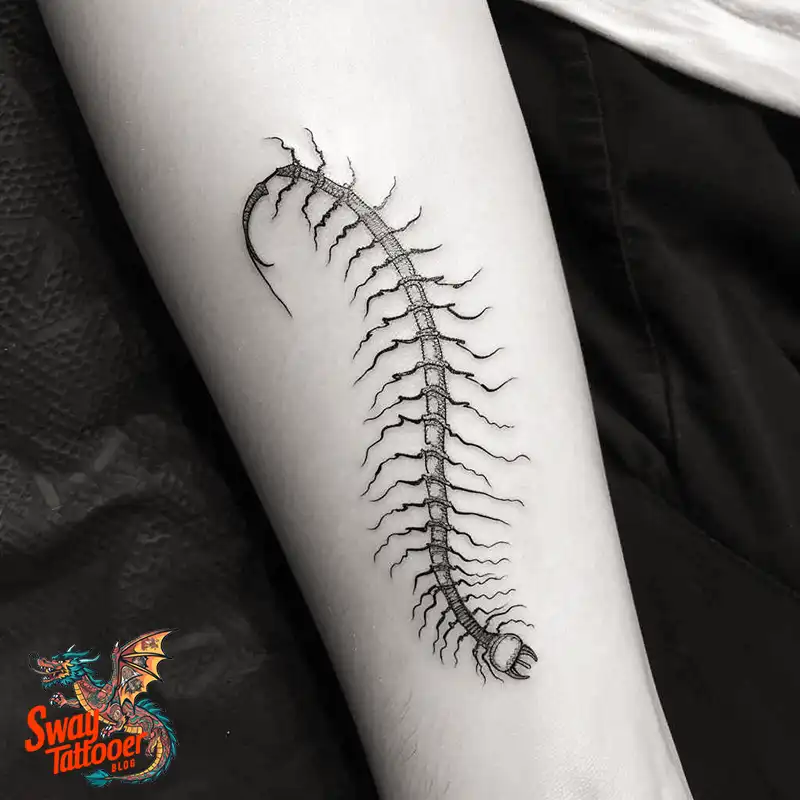
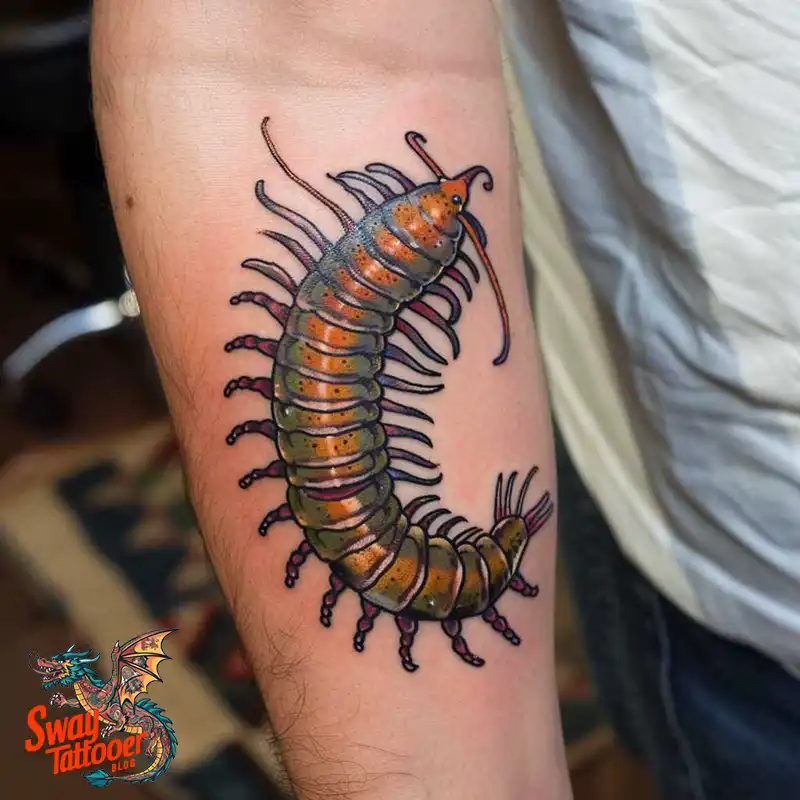
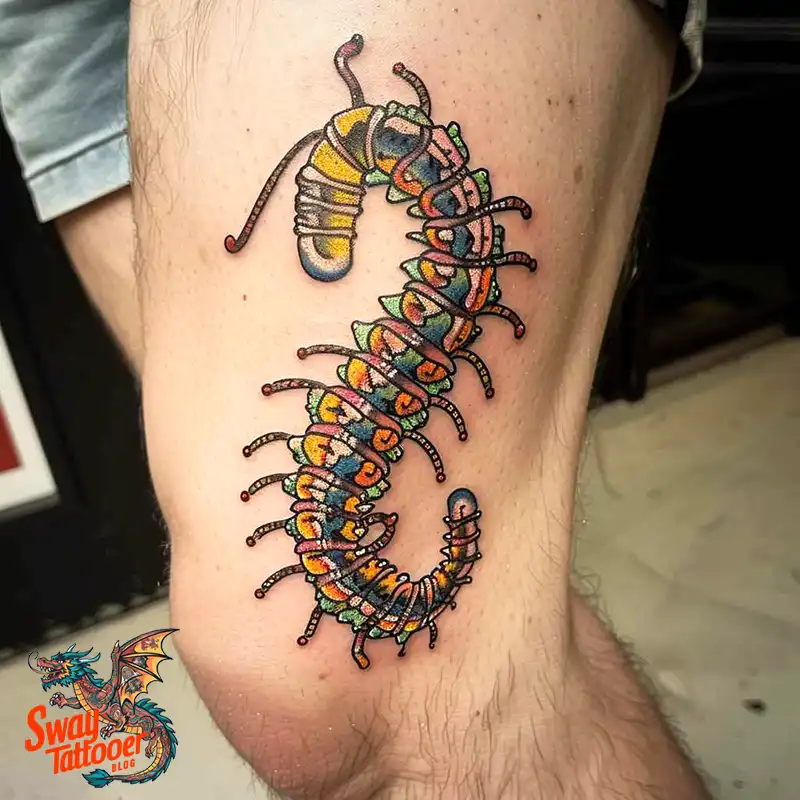
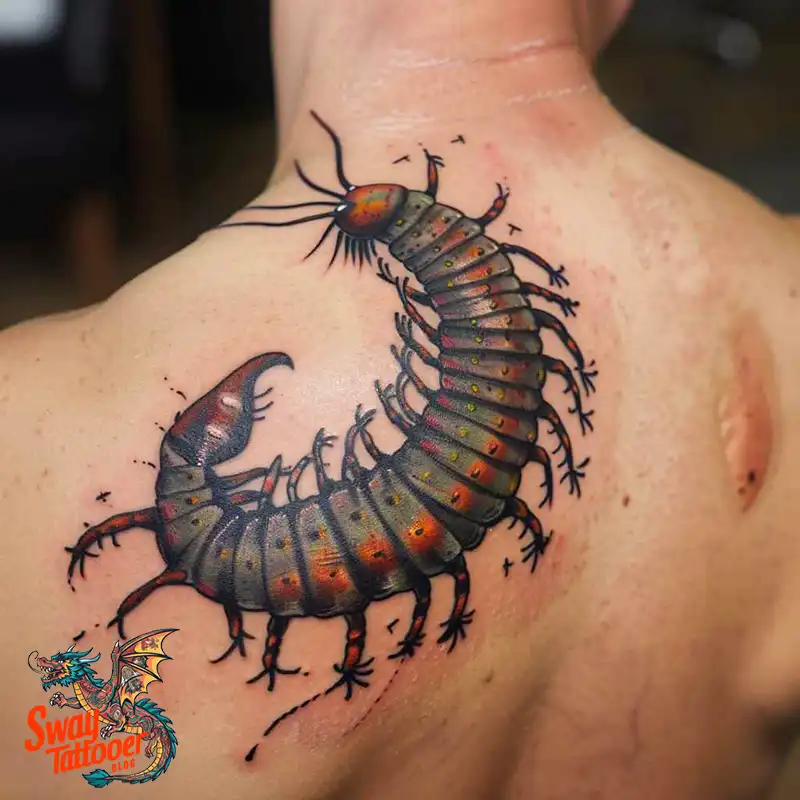


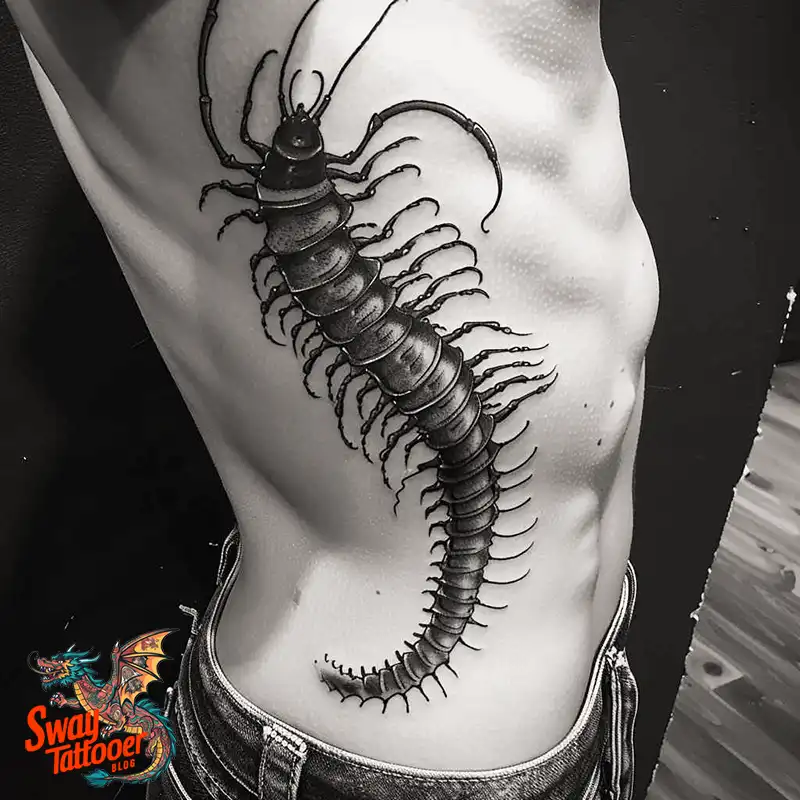



Final Thought:
The centipede is a creature that many find scary. But in many old cultures, it means great spiritual and military power. It is a strong symbol. It is both feared and seen as a powerful protector.
People choose centipede tattoo to show they never give up. It means they have strong discipline and spiritual defense. The centipede is a fast, powerful hunter. Its segmented body helps it survive. This mix of speed and strength helps it overcome any obstacle. This guide will show you the deep history and the best ways to get this powerful tattoo.

Leave a Reply